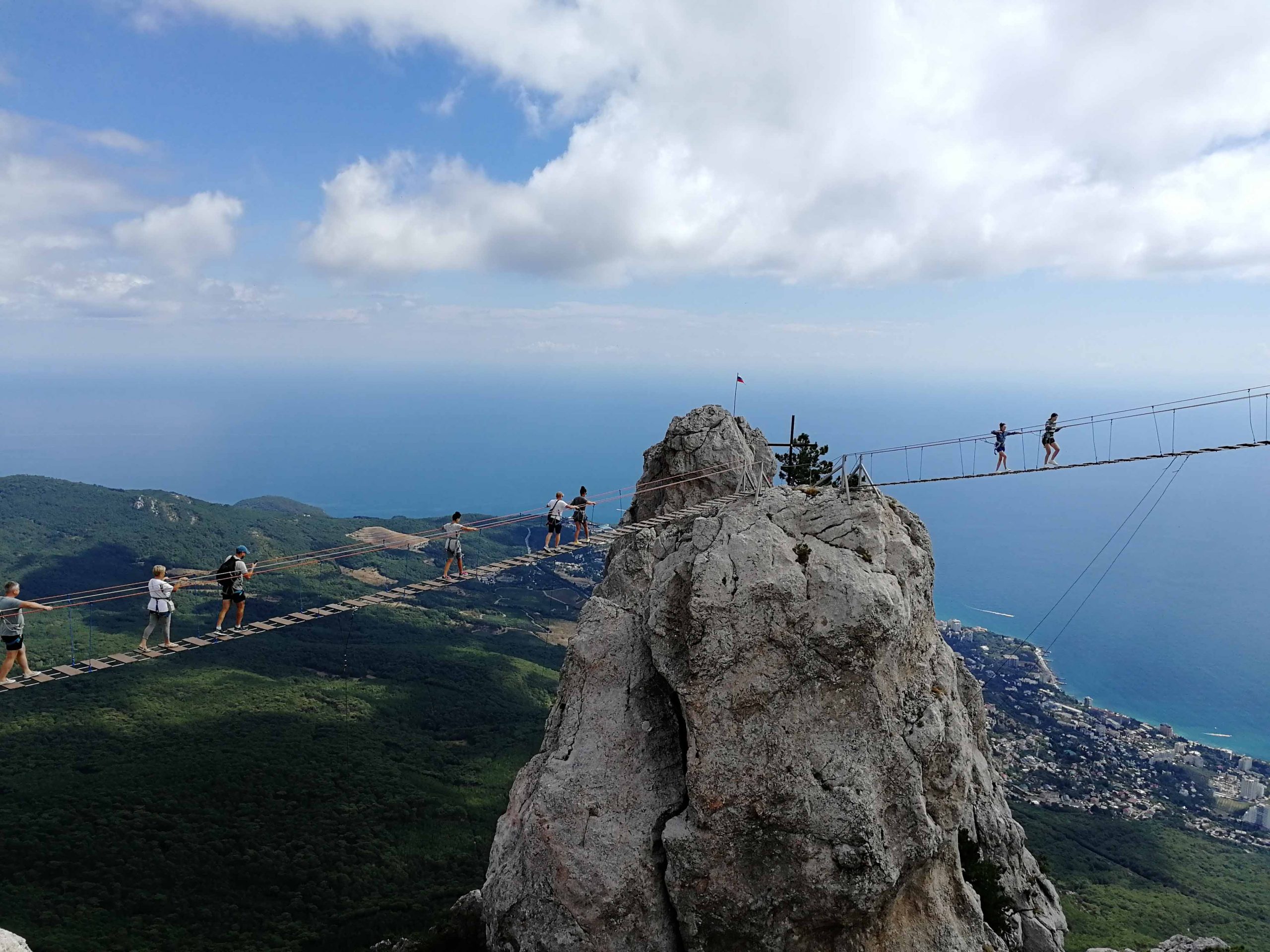
Ai-Petri (St. Peter) with the height of 1234 meters is the highest Crimean Mountain. It is located above the town of Alupka and the settlement of Koreiz. There is a cable car that takes passengers from the station “Miskhor” located near Alupka to the main area of Ai-Petri. Ai-Petri is one of the windiest places in Crimea as the wind blows here for 125 days a year. From the peak of Ai- Petri you will enjoy breathtaking views to the sea and below located settlements. For those who like thrill there are wood-slate cable bridges leading to the mountain jads and a zip line. There are also some caves which you can visit.

The Chatyr-Dag is a mountainous massif in Crimea near Simferopol- Alushta highway.The mountain consists of two plateaus: the lower (north) and the upper (south). The lower plateau slopes gently down to its northern side, which is covered insteppegrass. On its southern end (near the steep slope of the higher plateau) the lower plateau is covered with beech forests and juniper glades. It has many hiking trails and several beautifulcaves. On the east side of the lower plateau there is a grove of yews. The upper plateau has the shape of a giant bowl and on its rim, the highest peaks are each named. The upper plateau is covered with alpine meadows. Its slopes are very steep and offer some routes for multipitch climbing (rock climbingroutes longer than length of one climbing rope). The highest peak is Eklizi-Bourun (1527 m above sea level).
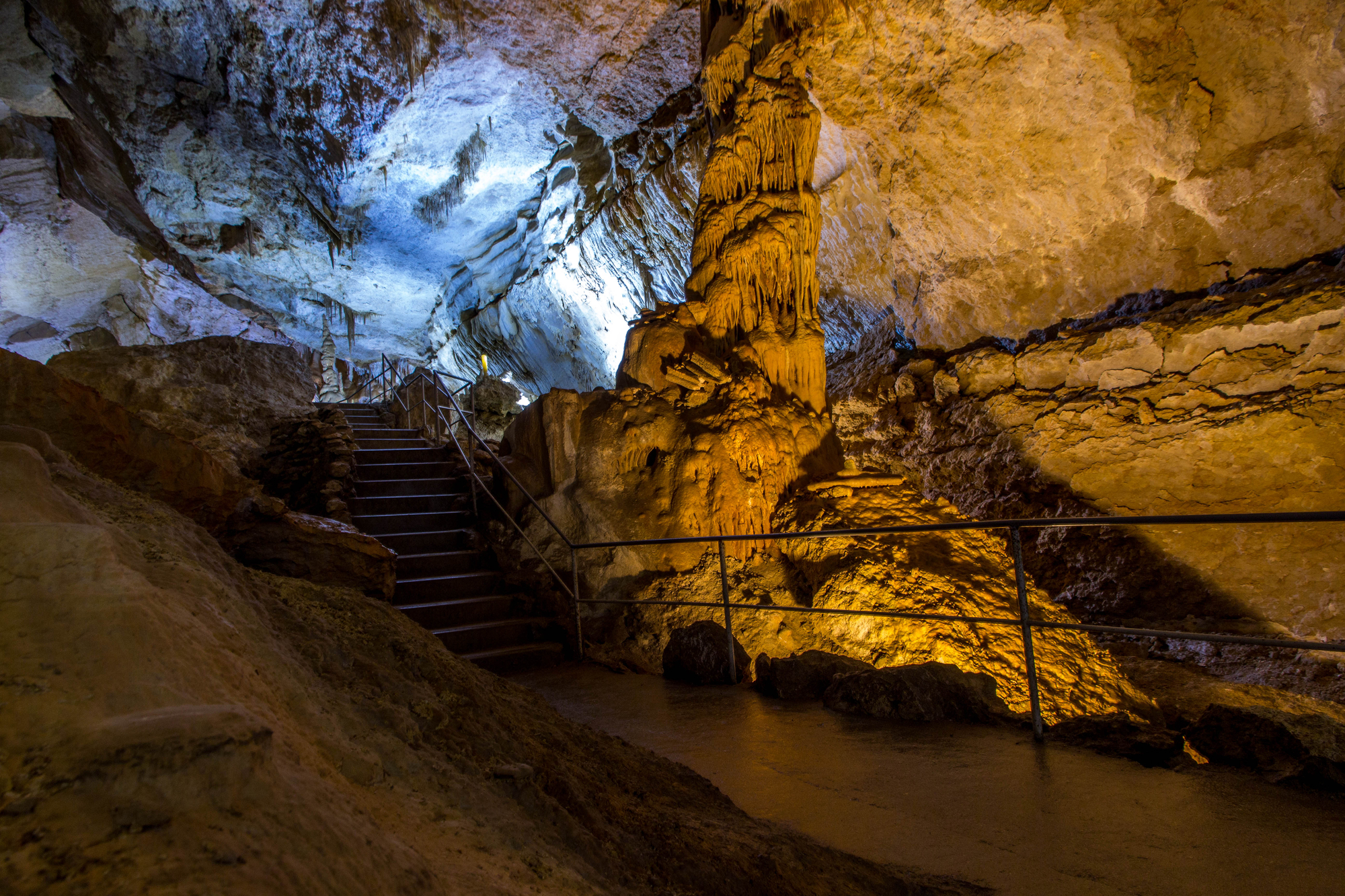
Marble Cave is a cave in Crimea, at the Chatyr-Dag mountainous massif. It is a popular tourist attraction being one of the most visited caves in Europe. Due to its uniqueness the Marble Cave became famous worldwide. Speleologists consider it among the top five most beautiful caves of the planet In 1992 it was included in the International Association of equipped caves.The tour goes through the Fairy Tales gallery, Tiger Path, with hundreds of various stalactites, the Perestroika Room (giant blocks at the bottom of the Room is the result of a grand collapse), the largest cave room of the Crimea and one of the largest equipped rooms in Europe with its length of 100 m and height of 28 m, the Pink Room, with stone roses covering the top of the room, the Palace Hall, with «Queen» and «King» columns, and the Hope and Balcony Room. A stalactite»forest» leads to the Luster Room. Dozens of precious «chandeliers» hang down from the ceiling covered with coralite «flowers», some of them almost reach the floor. Here is the place where the tour ends, yet the cave has four more rooms: Landslide, Channel, Chocolate, and Geliktite.
Tour duration – 1 hour. Temperature +9 C round the year.
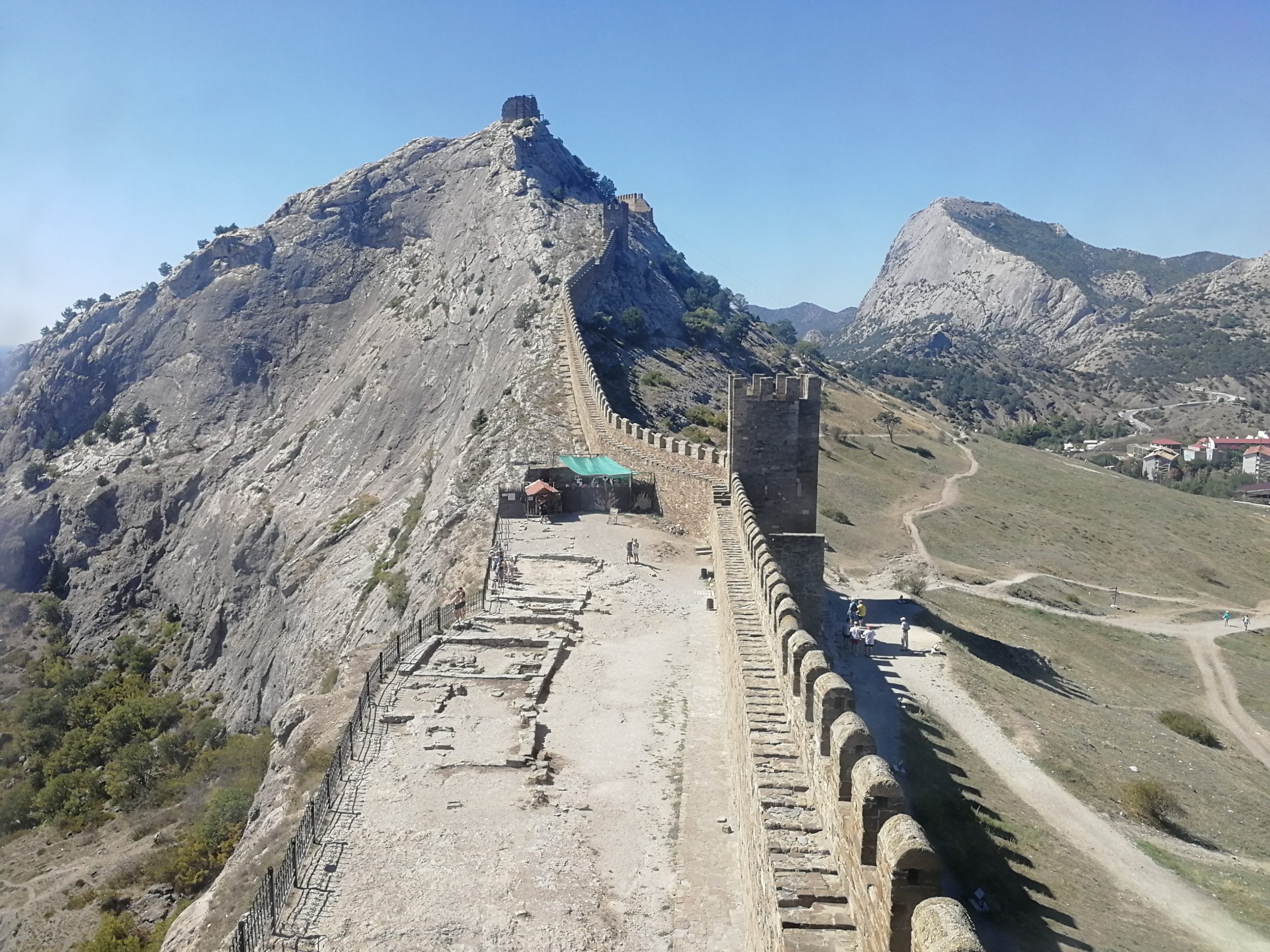
Town of Sudak is famous for the fortress in built in XIV c. by the Genoese as a base for their colonies in the northern Black Sea region. Fortification fortress complex consists of two lines of defense: outside (St. Cross Castle) and internal citade (St. Elijah Castle).
The composition of the outer line of defense consists of 14 towers (excluding the Port Tower) and the main gate. The walls connecting them have a height of 6-8 m and a thickness of 1.5-2 m. Each tower called the name of the Genoese consul in which period tower was built. It is fixed in plates with heraldic symbols and inscriptions in medieval Latin at some preserved towers.
The inner line of defense (citadel) includes 4 towers connected by the walls erected substantially along the crest of the mountain, the Consular Castle which consists of two towers and Lookouts (Maiden’s) Tower located separately on the top of the Castle Mountain. Lookouts (Maiden’s) Tower was the residence of the commandant of the entire citadel (St. Elijah Castle).
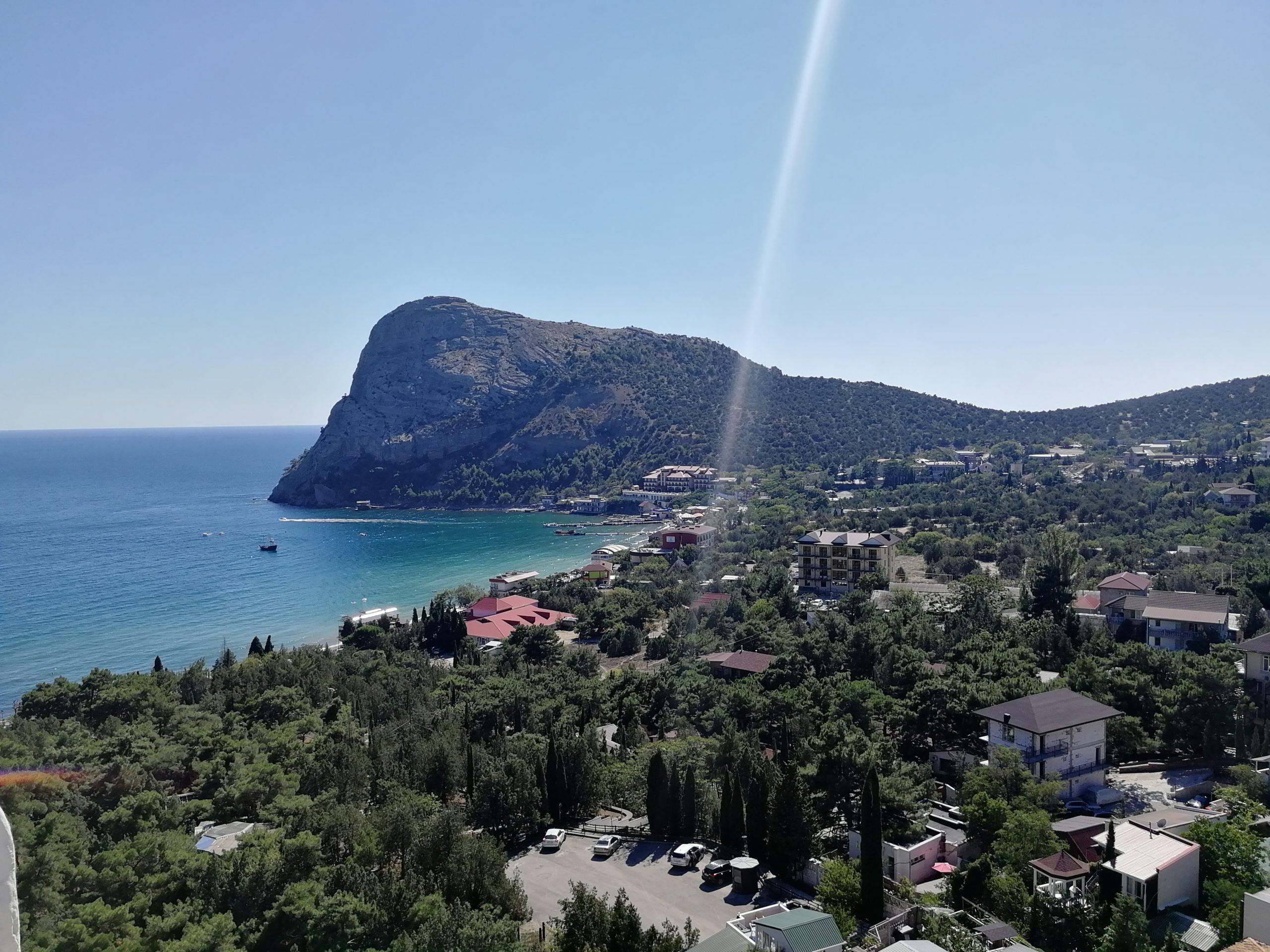
Novy Svet (literary “new world”) is a resort settlement located 7 km from Sudak. The settlement is one of the most picturesque places in the Crimea. The landowner and founder of the settlement, Prince Lev Golitsyn, called it Paradise. Inspired by European winemakers Lev Golitsyn organized in the late 19th century in his estate in Novy Svet the first in Russia production of sparkling wine. The Champagne Wine Factory «New World» has still been producing different kinds of sparkling wine, which you can taste during an excursion to the wine factory or to the winery museum. In 1912 the last Russian Emperor Nicholas II visited Novy Svet settlement. Lev Golitsyn ordered to build a path along the sea for walking to show the Russian tsar beautiful landscapes. Nowadays you can walk along the picturesque path and enjoy picturesque sea views.
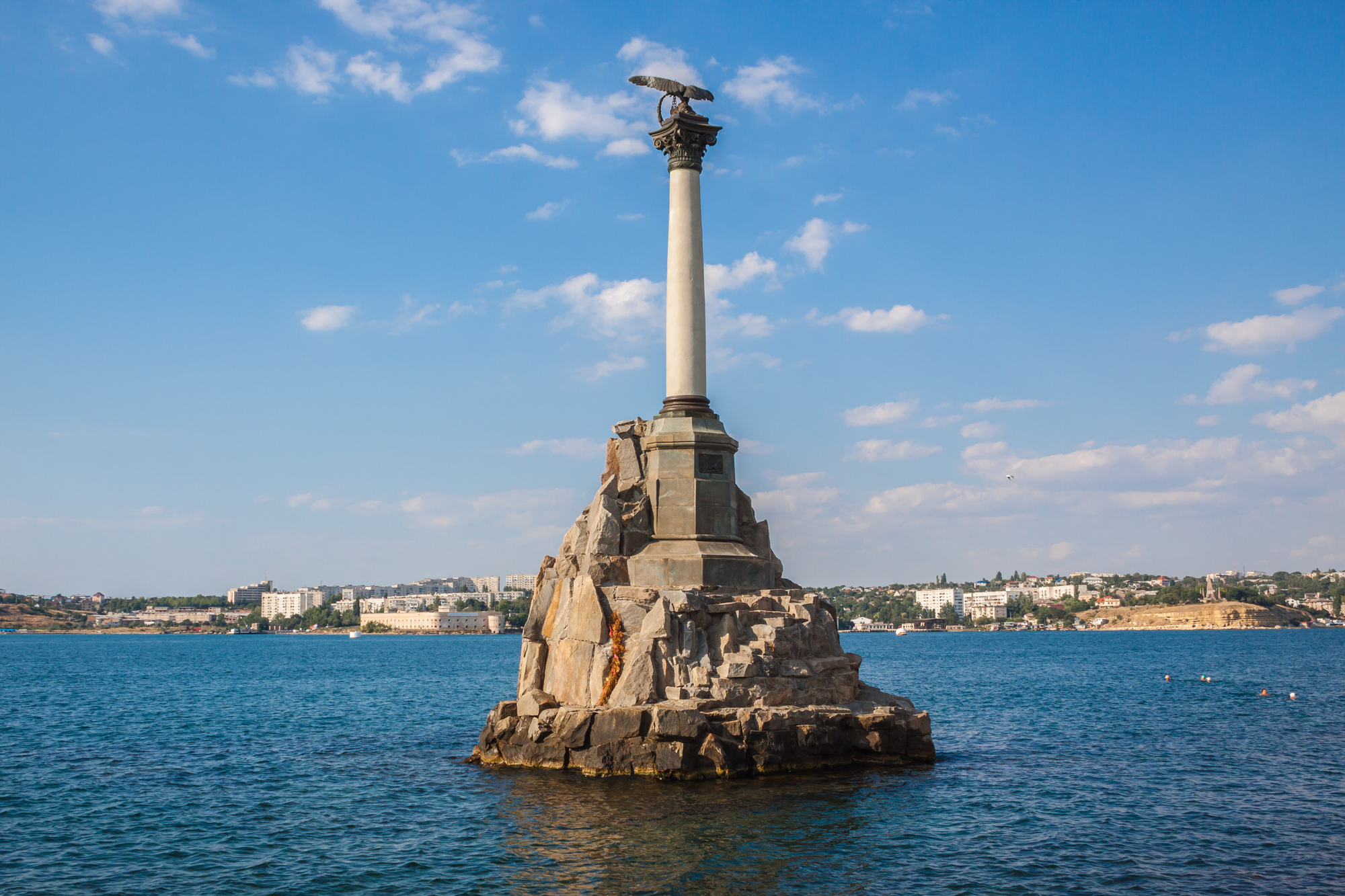
Sevastopol was founded in 1783 in the place of ancient Greek colony Chersonesus (you still can see its ruins not far from Sevastopol) as the Russian naval base at the Black Sea. The city’s Greek name means town of glory and grandeur. Tragic and heroic events of the Crimean War and WW II has proved more than once that Sevastopol fully justified this name. The most interesting places of the city are the Grafskaya (the Count’s) Quay built in 1846 as a front gate to the city from the side of sea and monument to the Russian ships sunken intentionally during the Sevastopol Defense (1854-1855), the Siege of Sevastopol Panorama Museum.

The Siege of Sevastopol Panorama Museum is one of the main attractions of Sevastopol city. This grandiose circular picture was created by great Russian war artist Franz Roubaud in 1904 for the 50th anniversary of the events of the Crimean War. It shows the Allied assault on the Malakhov Battery on June, 6th 1855 repulsed by Russians. In the picture you can see portraits of Russian admiral Pavel Nakhimov who headed the defense and prominent Russian scientist, military doctor Nikolay Pirogov who was considered to be a father of the field surgery after his work in the Crimea. The picture was damaged in 1942 during WW II and restored in 1950s.
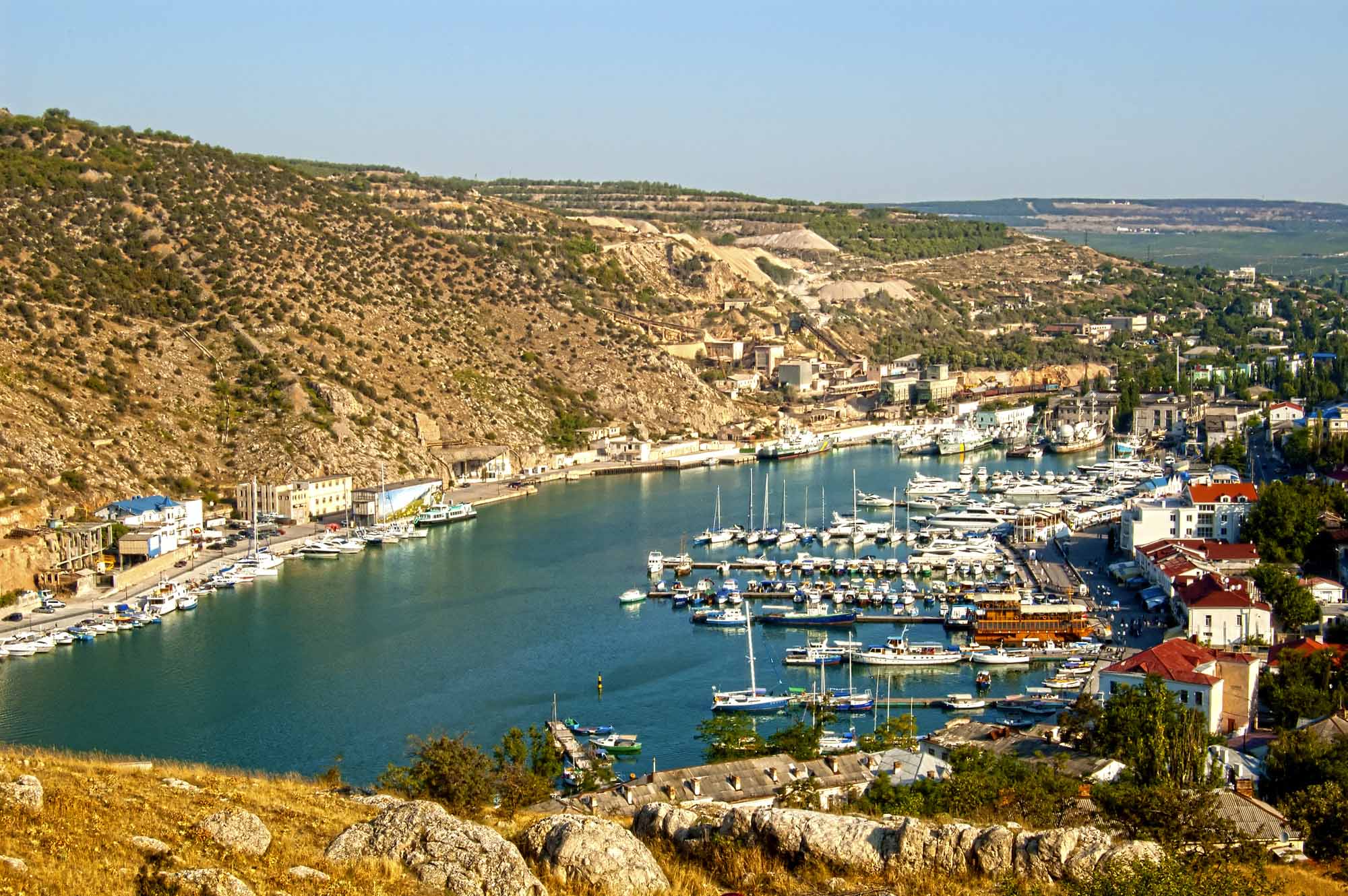
Balaklava is a part of the city of Sevastopol. Balaklava (originally Symbolon) was founded by the Ancient Greeks and served for them as an important commercial city. Afterwards the city was controlled by the Byzantine Empire, then by the Genoese and then by Turks. The town became famous for the Battle of Balaclava during the Crimean War thanks to the suicidal Charge of the Light Brigade. There are over 50 monuments in the town dedicated to the remembrance of past wars, including the Great Patriotic War, the Crimean War and the Russian Civil War. One of the main sights worth visiting is an underground submarine base that was operational until 1993. The base was designed to survive a direct atomic impact. The base was a top secret object, but nowadays it is opened to the public as the Naval museum complex of Balaklava.
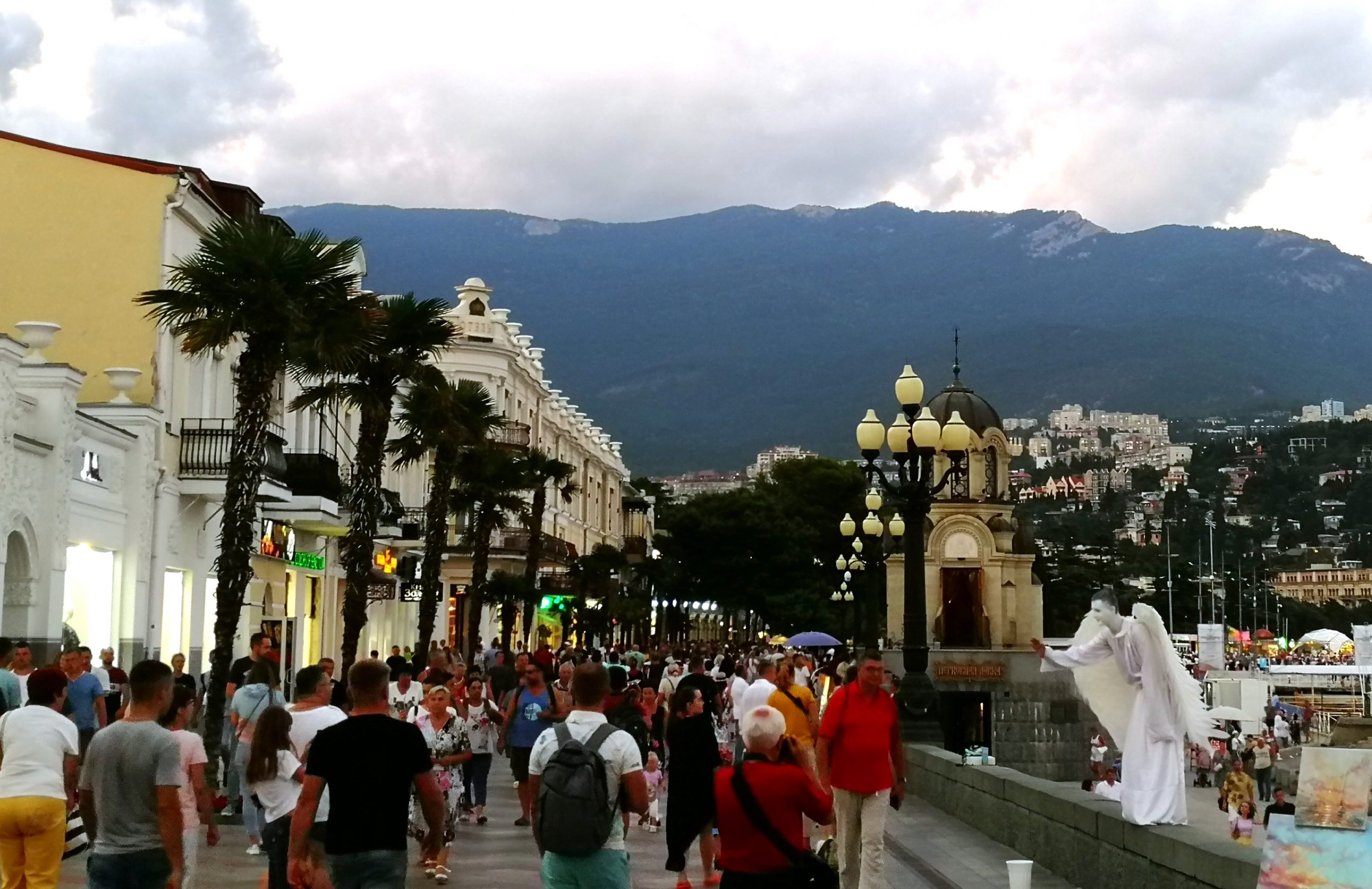
Yalta is the most popular resort in the Crimea. Settlement on this place was founded by ancient Greeks. “Yalos” means “shore” in Greek. The excellent mid subtropic climate and picturesque nature of this place unfold before the traveler the scenes of striking and unique beauty. Historical, archaeological and architectural monuments form unforgettable exotic landscapes. Among the most captivating attractions of Yalta is Anton Chekhov House Museum. Here the great Russian writer spent the last years of his life (1899-1904), here he wrote his famous short story The Lady with the Dog, plays Three Sisters and The Cherry Orchard.

Livadia is a settlement located 3 km from Yalta. Local Grand Palace built in late XIX c. became the summer residence of the last Russian Emperor Nicholas II. The palace was built of white Crimean limestone in the Neo-Renaissance style. It contains 116 rooms with interiors furnished in different styles. The Livadia Palace is world known as a place where historical Crimean Conference of Churchill, Roosevelt and Stalin was held in 1945.
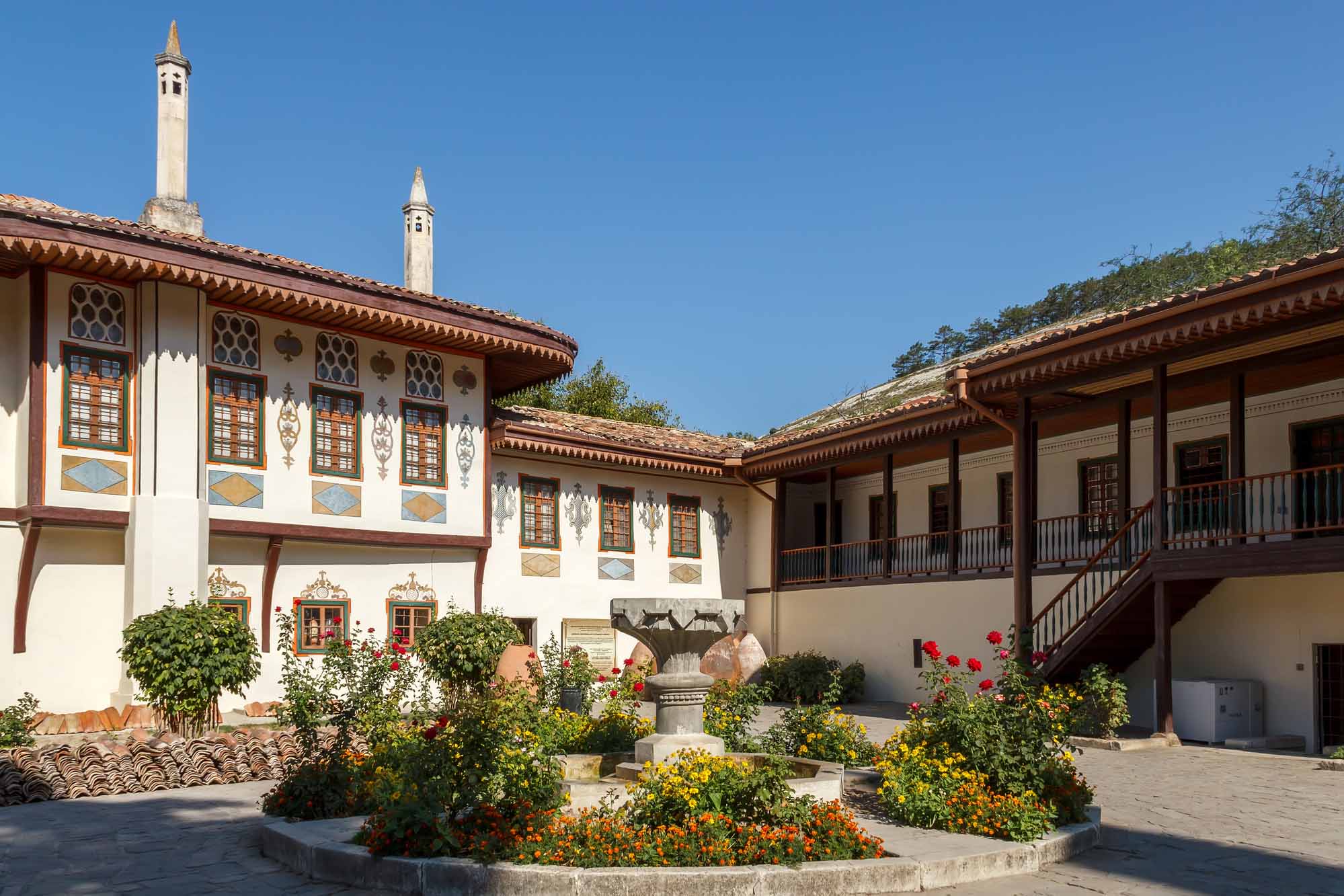
Small town of Bakhchysarai was a capital of the Crimean Khanate which existed in the Crimea since 1441 to 1783. In XVI c. the capital of the khanate was moved to Bakhchysarai and the Khan’s Palace was built here. In 1736 during Austro-Russian–Turkish War (1735–39) Bakhchysarai was completely burned by Russian troops of field marshal Burkhard Christoph von Münnich. Now you can see some buildings of the Khan’s Palace restored in 1740s-1750s. In the Khan’s palace you will see the famous Fountain of Bakhchisarai sung in the «Byronic poem» of the same name by Alexander Pushkin (1822) but do not expect to see anything like the fountains of Versailles, Peterhof and Exhibition of the Native’s Economy Achievements in Moscow; «fountain of tears» is quite modest structure). There is still possible to find samples of traditional Tatar architecture in the old part of the town: two-storey buildings with the first floor projecting over the ground one.
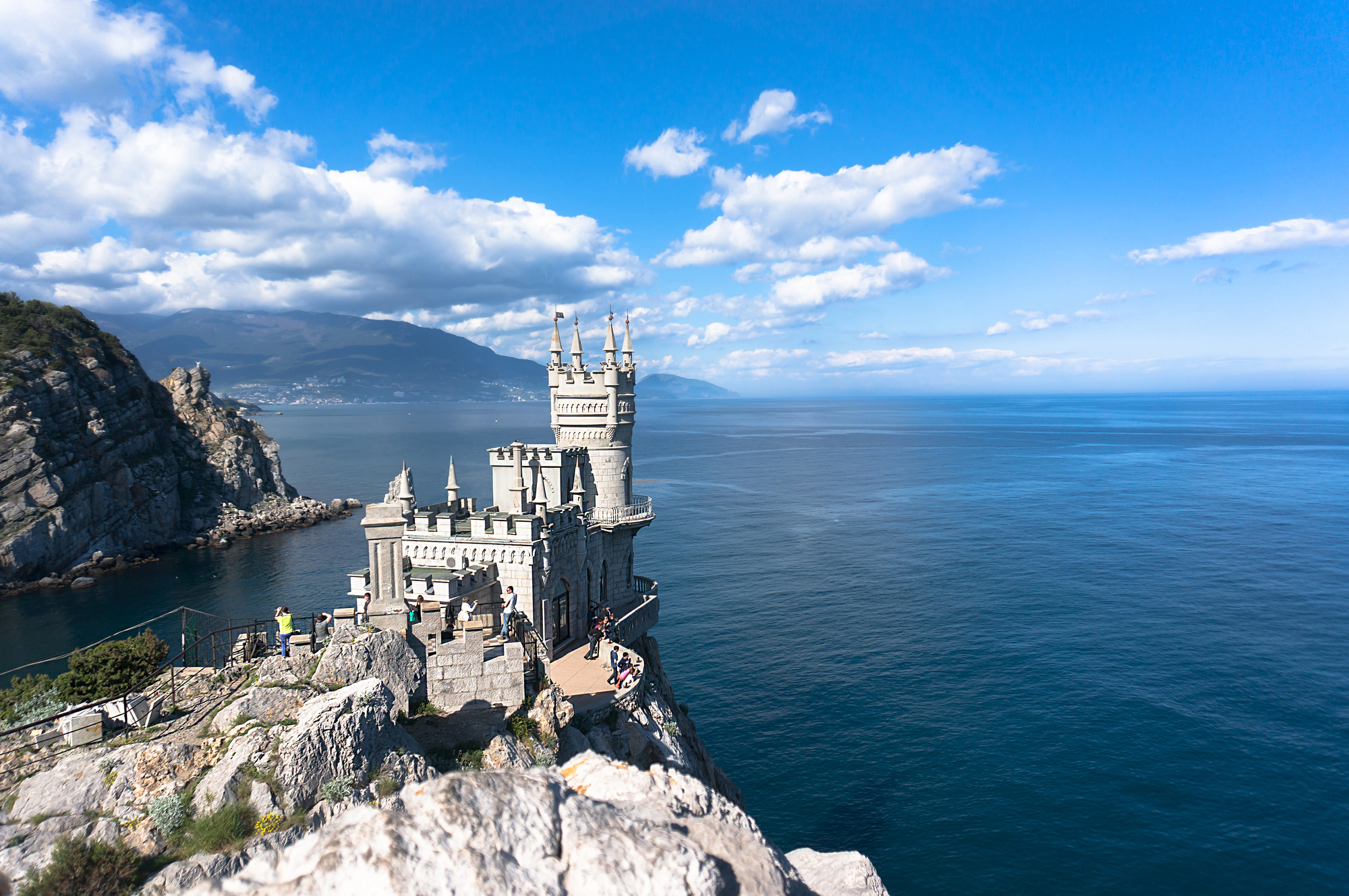
The Swallow’s Nest located at the Cape Ai-Todor in Gaspra settlement is the actual calling card of Crimea. This famous castle resembling the Belem Tower in Lisbon and the Miramare Castle near Trieste was built on the cliff in 1911 by architect Leonid Sherwood (son of Vladimir Sherwood, author of the project of the Historical Museum building at the Red Square in Moscow) in style of Gothic Rhine castles for oil industrialist Baron Shteingel (Steinheil). New owner of the castle the wife of Moscow merchant Rakhmanov designed interiors of the Gothic castle in early Russian style (WW I already began). A name the Swallow’s Nest is her idea too. As the result of terrible earth-quake of 1927 a part of the cliff together with garden came down to the sea and the panorama platform hanged over the precipice but the castle didn’t suffer. Currently the castle is in disrepair and awaiting for restoration. It would be closed for visitors but you still can see fantastic view of the sea shore with the Swallo’s Nest from nearly located platform.
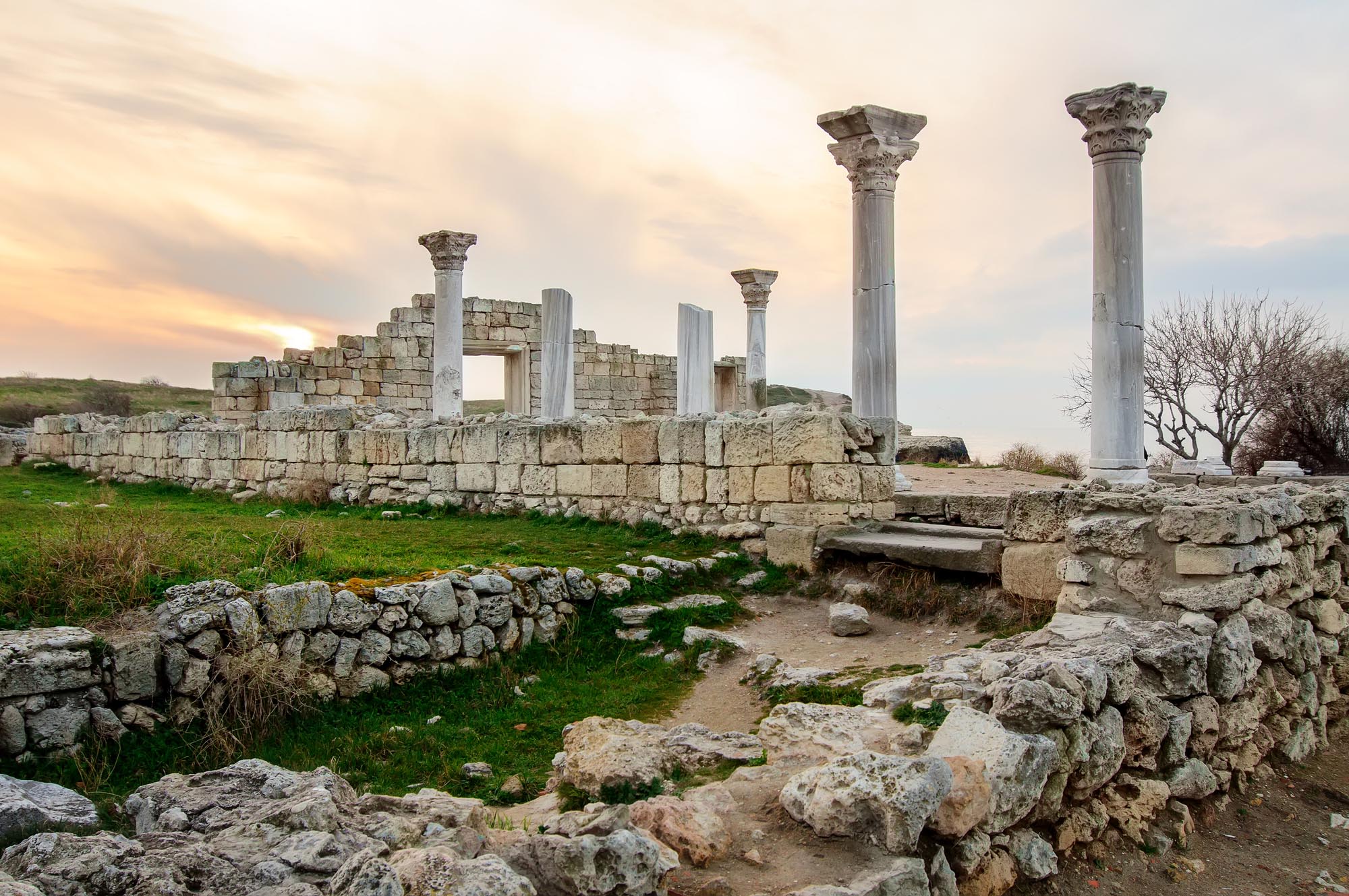
Not far from Sevastopol you can see ruins of ancient Greek colony Chersonesus. Chersonesus is a unique city where urban life was not interrupted since its foundation in 422/421 B.C. as Greek polis (colony of Heraclea Pontica) till the late XIV c. when city was destroyed three times for a very short period of time during war between the Grand Duchy of Lithuania and the Golden Horde and struggle between Edigu and Tokhtamysh in the Golden Horde. Archaeological excavations in Chersonesus are arranged systematically since 1880s. Now visitors can see Agora (market square in Greek polis), theater, the Basilica in Basilica (Medieval church built at the place of former antique temple ruins with using of its materials), Tower of Emperor Zeno the Isaurian. Another very interesting historical monument, the symbol of Chersonesus is so called the Bell of Chersonesus casted in 1778 from captured Turkish guns for church in Taganrog (this city was Russian naval base before foundation of Sevastopol) and in 1803 moved to Sevastopol. After the Crimean War the bell was confiscated by France as a trophy and placed to the Notre Dame de Paris. In 1913 on the eve of WW I it was restored to Russia.
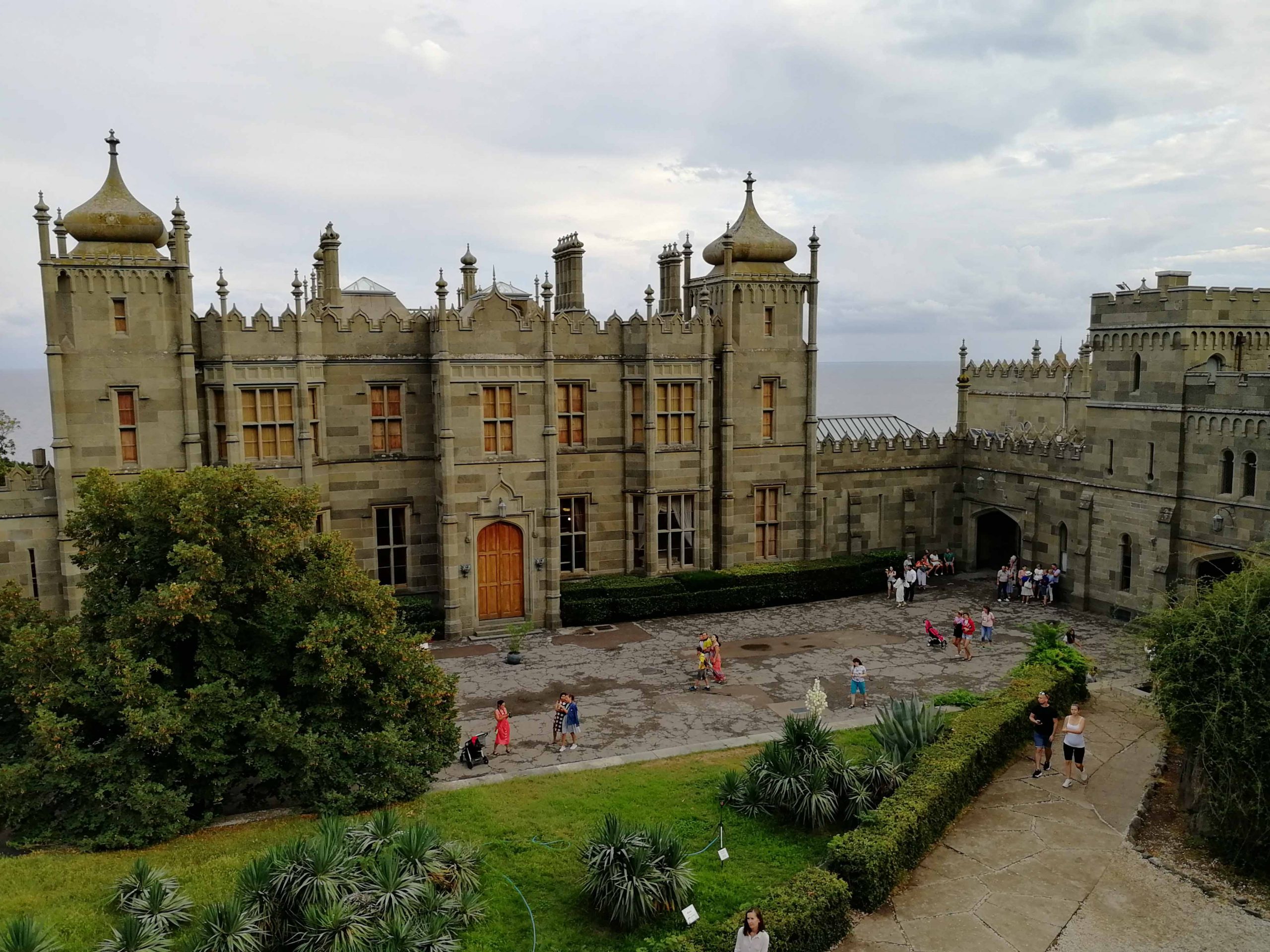
Alupka is one of the most popular places in the Crimea where you can built in English and Moorish Revival style Palace of count Mikhail Vorontsov (1828-1848) – governor of Bessarabia and Novorossiya (Novorossiya or New Russia – vast region north of the Black Sea included to Russian Empire as a result of the Russo-Turkish wars in the end of the XVIII c.). Picturesque park is actual masterpiece of landscape design created by talented German gardener and botanist Carolus Antonius Keebach who held the position of the head gardener of the Crimean southern coast. In Soviet period the palace was a dacha of Lazar Kaganovich, member of Stalin’s Politburo. During the Crimean Conference (February 1945) it was a residence of Winston Churchill. Famous Soviet film The Hamlet (1964), one of the symbols of the Khrushchev Thaw was shot here.
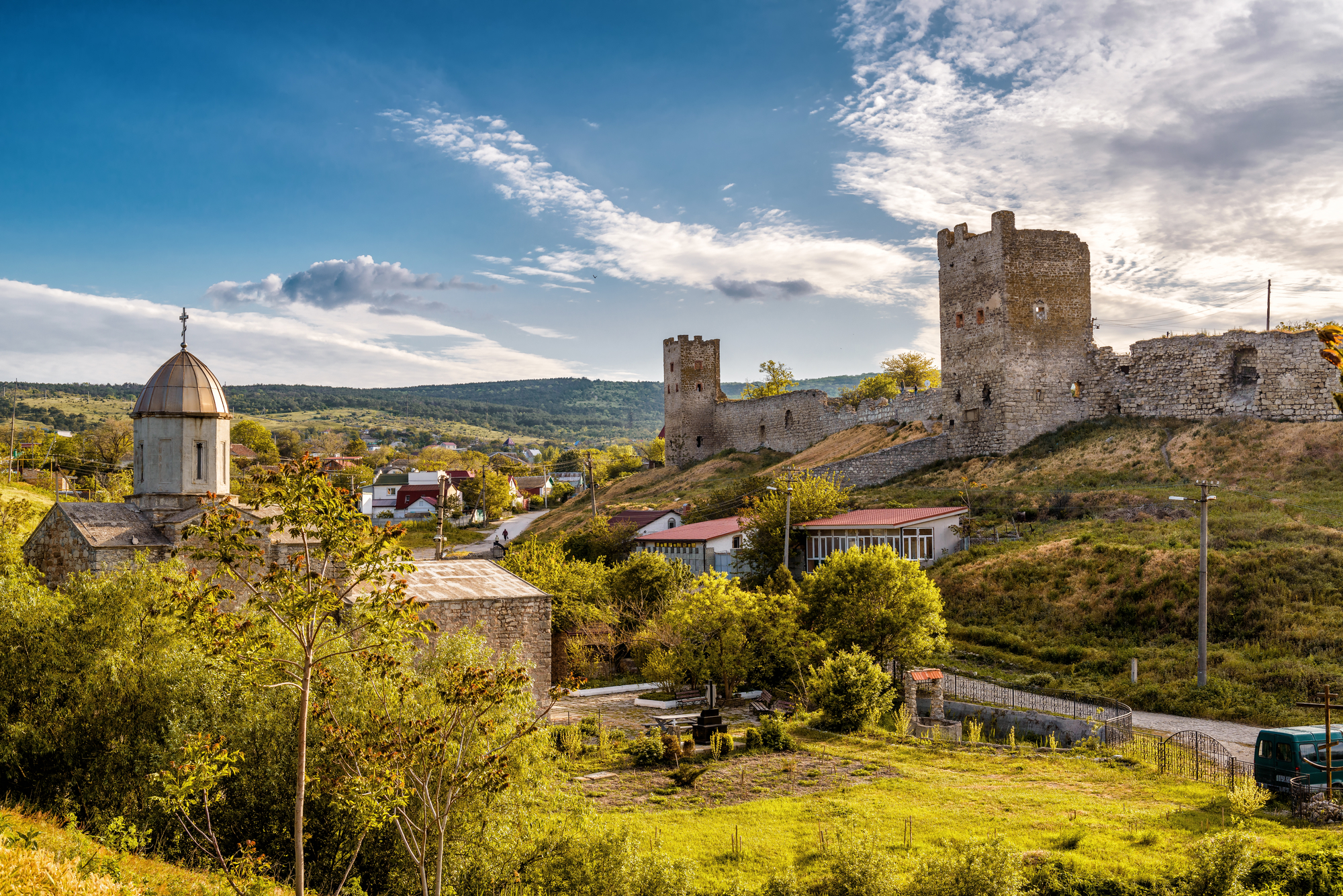
Feodosia was founded in the VI c. B.C. by Greek colonists from Miletus. In the Middle Ages Feodosia (Caffa) was a main port and administrative center of Genoese colonies in the Crimea. In the mid-XV c. Caffa (mostly populated by Armenians in that period) was larger than Constantinople. Captured together with other Genoese colonies in the Crimea by Ottoman troops (1475) Caffa became one of the most important Turkish ports at the Black Sea. The largest in the northern Black Sea area slave market was situated here. Every year thousands prisoners captured by Crimean Tatars (the Crimean Khanate was a vassal of the Ottoman Empire) during their regular raids to Russia, Poland and Lithuania had being sold here. In Feodosia you can see medieval Armenian Church of St. Sergius (St. Sarkis), the Mufti-Jami Mosque (XVII c.) built in traditional for Turkish mosques style, Genoese fortress located at the oldest part of the city – the Quarantine Hill.
Famous Russian painter considered to be one of the world’s greatest marine artists Ivan Aivazovsky lived and worked in Feodosia. You can see his grave here and the Aivazovsky’s Fontain – pavilion with the Subash Springs drinking water (1887) designed and sponsored by him. Local art gallery named after Ivan Aivazovsky contains the world’s largest collection of works by the great painter.
Feodosia is also associated with name of Alexander Grin, Russian writer of early XX c. whose romantic philosophical and psychological novels and short stories with elements of symbolism and fiction were very popular in period of the New Economic Policy (1920s) but became absolutely unacceptable for Bolsheviks in period of Stalin’s dictatorship and were forbidden. You can visit museum arranged in house where the writer lived in 1924-29 where he created his masterpiece novel She Who Runs on the Waves (1926).

Founded in the late VI — early V cc. B.C. by colonists from Ionia, Eupatoria (originally Kerkinitis) was the first Greek colony in the west part of the Crimea. In period of the Crimean Khanate the city had Tatar name of Kezlev. When Crimea became a part of Russia (1783) it was renamed into Eupatoria after famous king of Pontus Mithridates VI Eupator Dionisius who several times helped the citizens of Kerkinitis to defend their city against Scythians. In the early XIX c. new large port was built here. During the Crimean War Eupatoria was a place of Allies landing (1854) and became the fortified base for their operations in Crimea.
The main tourist attraction of the city is kenesa, the temple complex of the Crimean Karaites which consists of two houses of worship, religious schools, charity dining, household courtyards and multiple courtyards (the Grape, the Marble, the Expectation of Prayer, the Ritual, the Memorial). The kenesa long since had been a center of religious life of the Karaites of Eupatoria and since 1837 it became the spiritual center of the Karaites of Russia.
Another places of interest are the Juma-Jami Mosque (XVI c.), the Tekke (the Asylum) of Dervishes of the XV-XVI cc. — the only in the Crimea Khanqah (building designed specifically for gatherings of a Sufi brotherhood), the Turkish bath (XVI c.), St. Nicholas Cathedral (1899), Greek Church of St. Elijah (1911-1918), Armenian St. Nicholas Church (1830s-1840s).
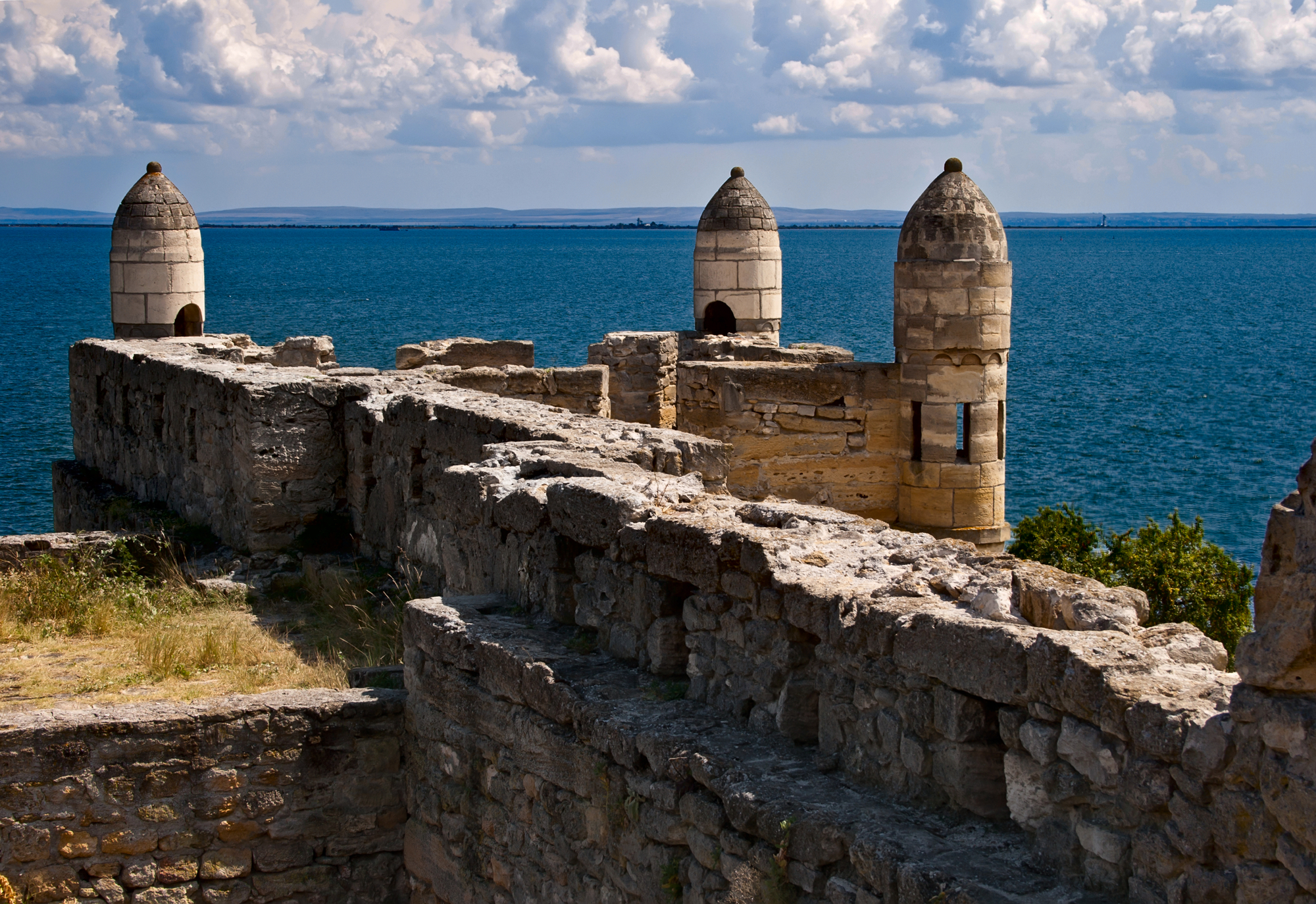
Founded in the late VII c. B.C. by colonists from Miletus, Kerch (originally Panticapaeum) is one of the most ancient cities in the world. Panticapaeum was the capital of the Bosporan Kingdom and the place of death of Mithridates VI Eupator Dionisius, the legendary king of Pontus who three times was at war with Rome fighting against troops of Sulla, Lucullus and Pompey.
In Kerch you can see a lot of fortifications and other military constructions: coastal batteries, caponiers, barracks and warehouses for ammunition. During the Crimean War the Russian army surrendered Kerch to the Allies without a fight because of the lack of defences and all these impregnable fortifications designed by outstanding military engineer Eduard Totleben was built after the end of the Crimean campaign. Another places of interest are the Royal Kurgan — funeral monument of the Bosporan Kingdom period (IV c. BC), Byzantine Church of St. John the Baptist (VIII c.) — one of the oldest Christian churches in the East Europe, the Mount Mitridat where Mithridates VI Eupator Dionisius committed suicide. From the Mount Mitridat you can see picturesque panorama of the city and the bay. The grandiose classical Grand Mitridat Stairs (436 steps) designed in 1830s by Italian architect Alessandro Digbi leads from the mount to the city center. During WW II Kerch was a place of fierce battles. Now you can see military memorial at the Mount Mitridat – the first WW II memorial in the USSR (1944) and underground memorial museum at the Adzhimushkay Quarry.
One of the most known engineering sights located near Kerch is the Crimean Bridge (also known as the Kerch Bridge). The bridge connects the Taman Peninsula of Krasnodar Krai and the Kerch Peninsula of Crimea. The bridge complex provides both road and rail traffic. With a length of 19 km it is the longest bridge in Europe.

Rostov-on-Don was founded in 1749 by the Empress Elizaveta Petrovna, daughter of Peter the Great at the place where the Don River flows into the Sea of Azov, at the crossroads of sea and land trade routes. Rising on the hills and along the right bank of the Don River, it is the largest city of the south of Russia. It became one of Russia’s main ports of entry and a customs house for merchant ships from Greece, Italy, Turkey, Armenia, Persia, Russia and many other far away ports. In the late XIX c. Rostov-on-Don became known as the Gateway to the Caucasus because all loads and passengers directed to the Caucasus by rail way passed through Rostov. During the Civil War in Russia (1918-1922) Rostov was one of the centers of the anti-Bolsheviks White Movement supported by the main part of local Cossacks. Rostov-on-Don will be one of Russian cities where the 2018 FIFA World Cup will be held.

The most popular for citizens of Rostov and its guests are Embankment of the Don River and the Bolshaya Sadovaya Street, the main street of the city where you can see a lot of magnificent architectural monuments in Modern style. Among them are: City House built in 1899 by outstanding Russian architect Alexander Pomerantsev who also designed the Upper Trade Arcades (GUM now) in Moscow and the Alexander Nevsky Cathedral in Sofia; house of actress Margarita Chernova built by one of her rich admirers (1899); trade house of Pustovoitov (1910) where Rostov GUM is located now; local Musical Theater – interesting sample of contemporary architecture (1999).
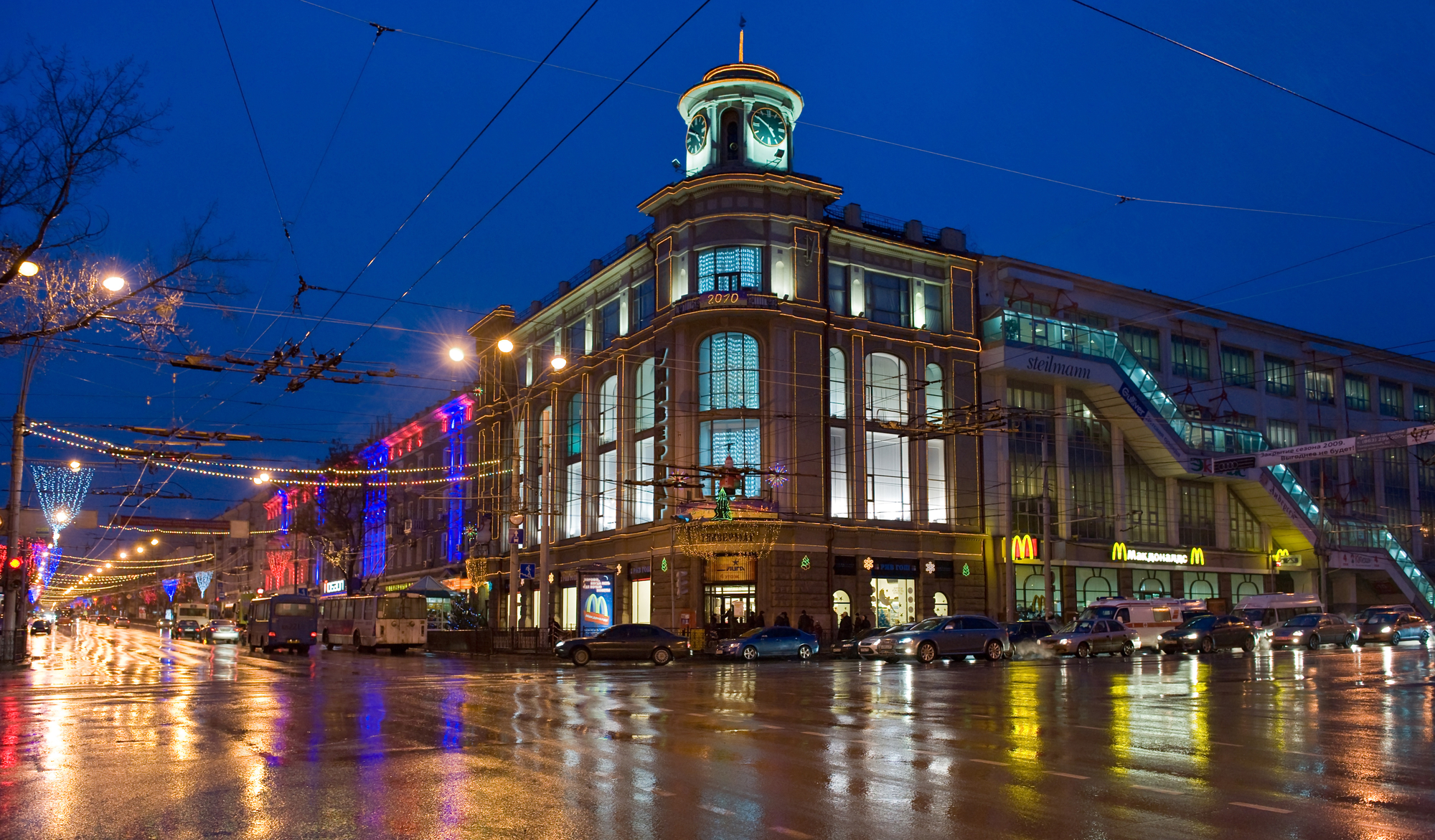
Stalin’s epoch is represented with grandiose constructivism building of the Rostov Dramatic Theater named after Maxim Gorky (1935) considered by Le Corbusier and Oscar Niemeyer a pearl of Soviet architecture and presented in London Museum of History of Architecture together with St. Basil Cathedral at the Red Square in Moscow. Another interesting building is the Cathedral of the Nativity of Our Lady, the main Orthodox church in Rostov-on-Don built in 1854-1860 according to standard project by architect Konstantin Ton who designed the Cathedral of Christ the Saviour in Moscow. You will visit former center of Nakhichevan town (absorbed by Rostov city in 1928) founded in 1779 by Armenians who moved here from Crimea. Many well-known figures of Armenian culture are natives of Nakhichevan (among them are writer Mikael Nalbandian and painter Martiros Saryan). Here you will fully feel a cozy atmosphere of old southern provincial town.
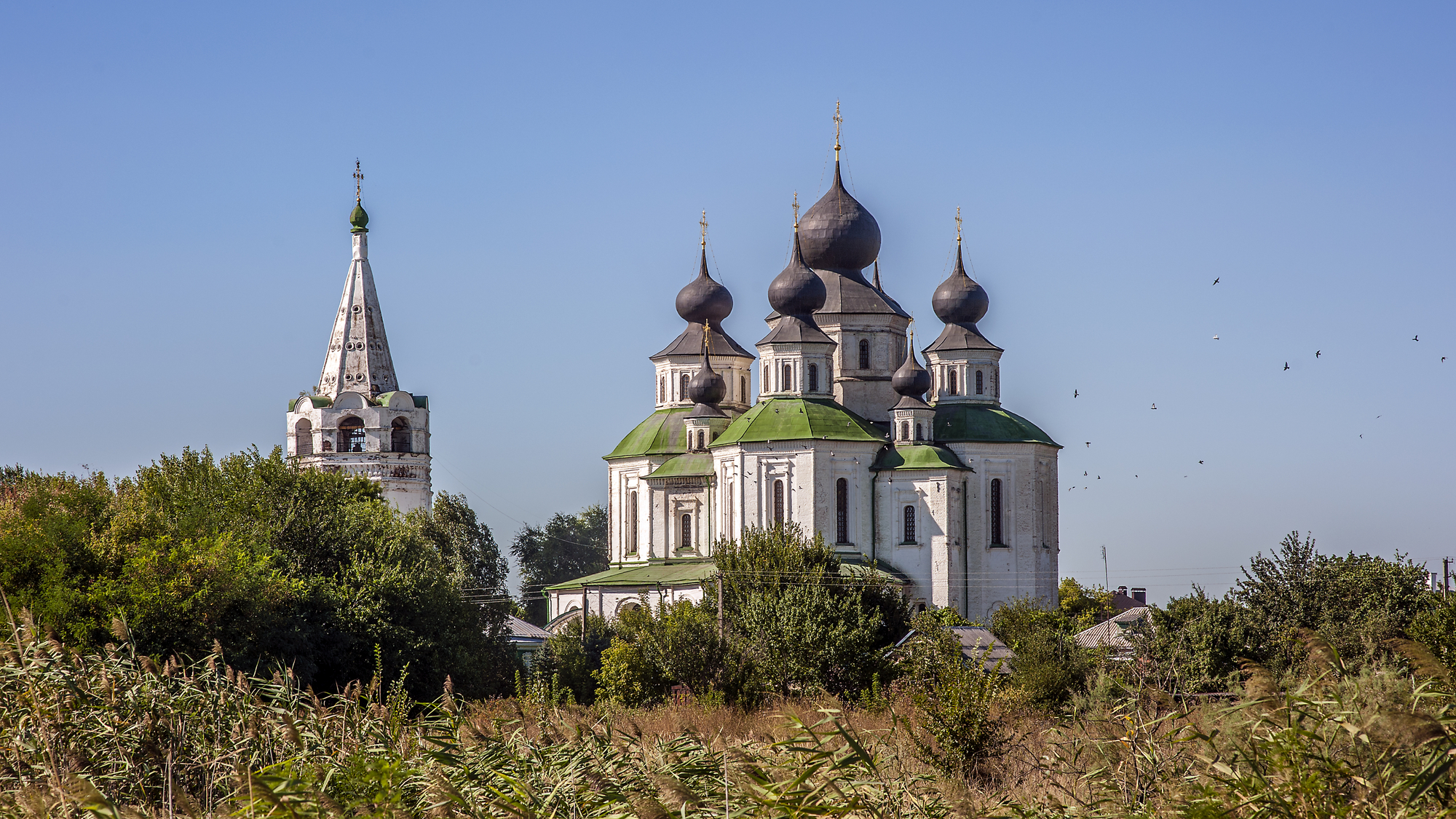
Starocherkasskaya is a stanitsa (Cossack village) once called “the Venice of the Don” built on an island in the Don River. Since the late XVI c. into the very early XIX c. it was a capital of the Don Cossacks. Residence of their atamans (tittle of Cossacks elected leader; since 1718 atamans were assigned by Russian government) was situated here. Famous Russian writer, Nobel laureate Mikhail Sholokhov, author of the epic novel And Quiet Flows the Don initiated founding of the Museum complex at Starocherkasskaya (1970). Its area is 180 hectares where more than 100 architectural monuments are preserved. Military Resurrection Cathedral founded by Peter the Great is the oldest existing temple of the Don land. A square near the Cathedral was a place where Cossacks made meetings and decided the most important questions of their life. At the Farmstead of ataman Efremov (XVIII-XIX cc.) the Ataman’s Palace, the house church, family cemetery are survived. People could forget the beautiful ataman’s wife Melaniya Karpovna but her wedding really stuck in national memory. Folklore expression the Melaniya’s Wedding became a symbol of rich feast in Russia.

Novocherkassk is new capital of the Don Cossacks. The capital was moved here in 1805 by ataman Matvei Platov, famous Russian general who was a commander of the Don Cossacks during anti-Napoleon campaigns. The wide streets and squares of new capital were specially designed to accommodate the vast mounted cavalry of the Cossack army of the XIX c.. Two triumphal arches dedicated to the victory over Napoleon was built in 1817 specially for visit of Emperor Alexander I. Cossack didn’t know exactly from which side Emperor is going to come and decided to built two arches. The grandiose Ascension Cathedral (the last building was constructed in 1893-1905) was a place where the horse regiments of the Cossack army gathered for the blessings and prayers before all campaigns of the XIX-early XX cc.. During the Civil War in Russia (1918-1922) the Ataman’s Palace built in 1863 was the head-quarters of the anti-Bolshevik White Army. In 1962 strike at local locomotive building plant and mass riots against price increase was brutally suppressed by Soviet Army (the Novocherkassk massacre). Local Museum is dedicated to the history of the Don Cossacks. The Reconciliation and the Consent monument (2005) is erected in memory of all victims of Civil War in Russia. At the end of the tour everyone is invited to stroll through the cozy alleys of Alexander Garden, admire the majestic simplicity of the Ataman’s Palace.
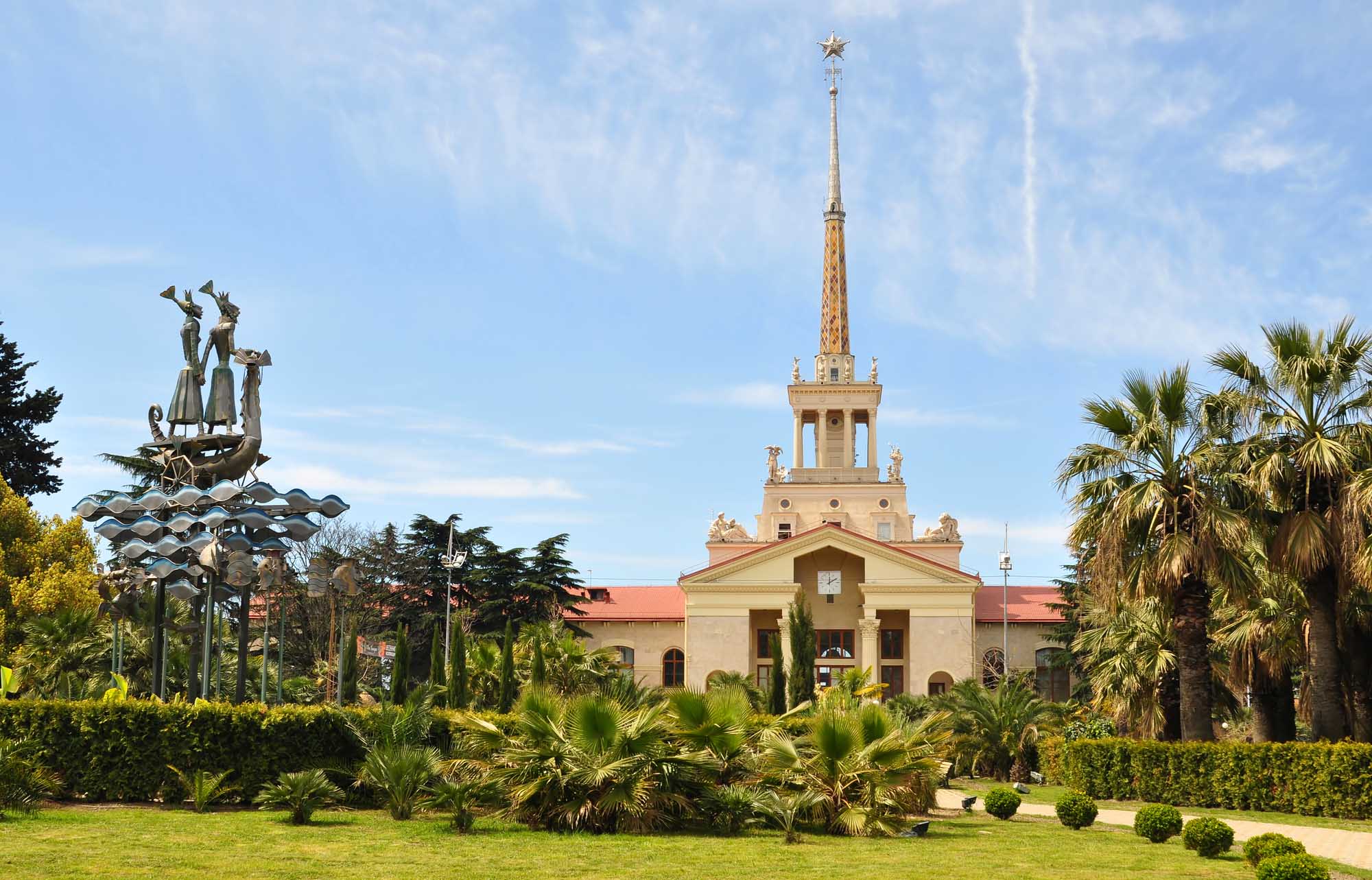
Sochi is an agglomeration of separate settlements (Vishnyovka, Lazarevskoye, Golovinka, Loo, Dagomys, Sochi city center, Matsesta, Khosta, Adler) established in 1830s as coastal forts. These settlements are situated quite far from each other so the length of Sochi’s Black Sea coastline is about 145 km. It is the longest city of Russia. The main places of interest of Sochi are the Winter Theatre (1930s) with three female figures symbolizing painting, architecture and sculpture created by famous sculptor Vera Mukhina, the Marine Station (1955), the Primorsky Boulevard promenade where you can see very nice buildings of the Pushkin City Library (1912), the Primorskaya Hotel (1936) and other palace-like health-resorts built in Soviet period. Settlement of Matsesta is the largest in Russia medical spa complex established in 1902 on base of local springs. The next local place of interest is subtropical Sochi Dendrarium arboretum founded in 1892 by nobleman Sergei Khudekov, writer, collector, publisher and ballet historian who invested into the local replica of Franco-Italian terraced parks of the late XIX c.. From the Romanesque style tower built in 1936 at the Mount Akhun you will see panorama of Sochi city and the Black Sea coast.
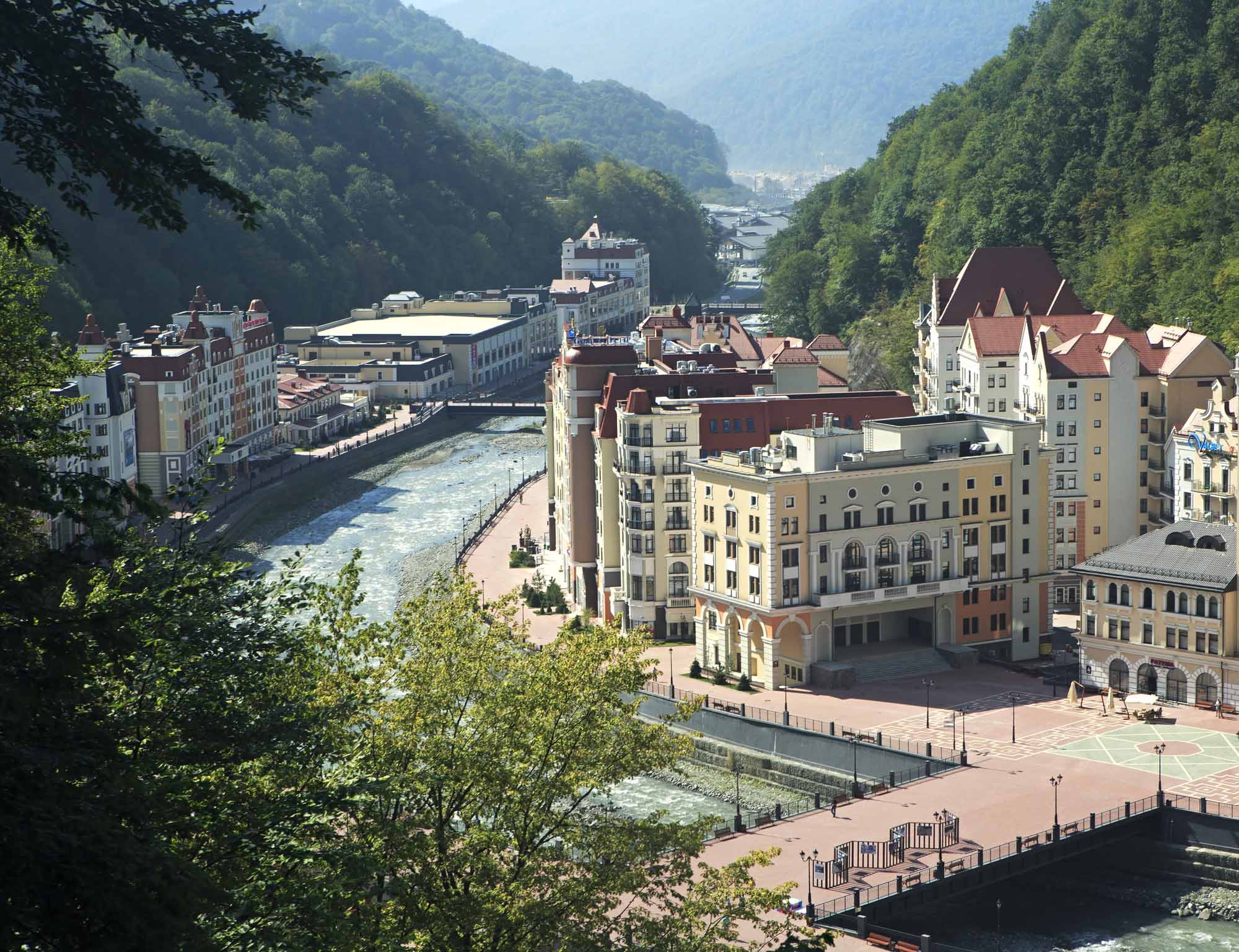
In 2007 Sochi was voted the capital of Winter Olympics-2014. The main arguments in Sochi’s favor were a lot of hotels and political support guaranteed. Sochi became the first city of the Winter Olympics with subtropical climate. The Olympic Winter Games were held in Sochi from 7 to 23 February, 2014, Paralympic Winter Games took place from 7 to 16 March. A lot of sport and infrastructure facilities located in two clusters (coastal and mountain) were built within 5-6 years. In the mountains (the Krasnaya Polyana mountain skiing resort area) competitions in mountain skiing, cross country skiing, biathlon, snowboarding, freestyle skiing, ski jumping, bobsleigh, luge and skeleton were arranged.
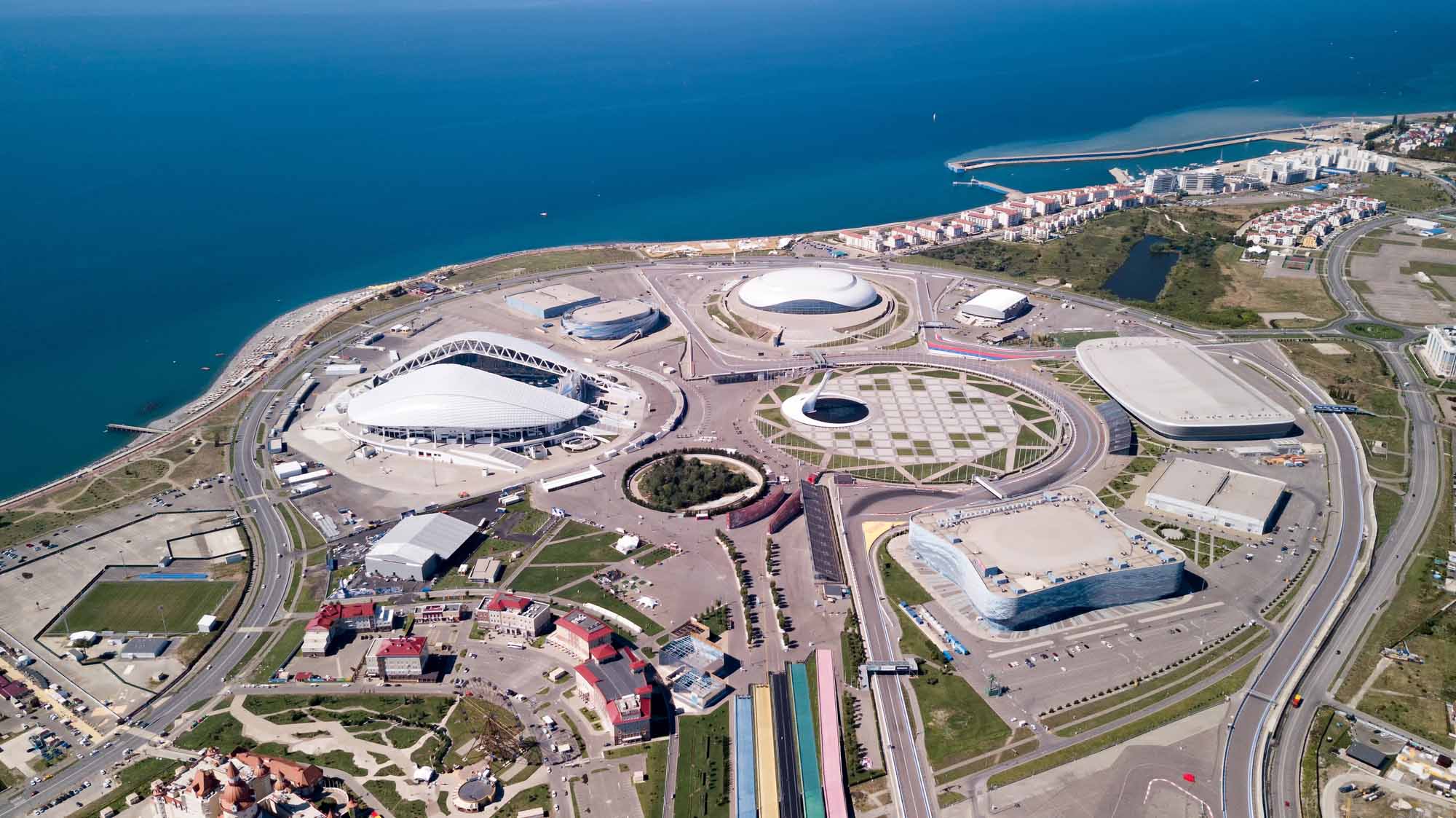
On the shore of the Black Sea (the Imereti Lowland) at the Olympic Park specially built for the Olympic Games and at situated on its territory sport facilities (the Fisht Olympic Stadium, the Bolshoy Ice Dome, the Iceberg Skating Palace, the Shayba (the Puck) Arena, the Adler Arena Skating Centre, the Ice Cube Curling Center) the official opening and closing ceremonies of the Olympic and Paralympic Games were held as well as ice hockey, speed skating, figure skating, curling and short- track competitions. At the Olympic Park you can also see the Sochi Media Centre and the only in Russia Formula One Gran Prix racing circuit. You will have a chance to take pictures by the Olympic Cauldron on the Medals’ Plaza in front of the Wall of Champions, the Olympic Rings, the Olympic Venues.
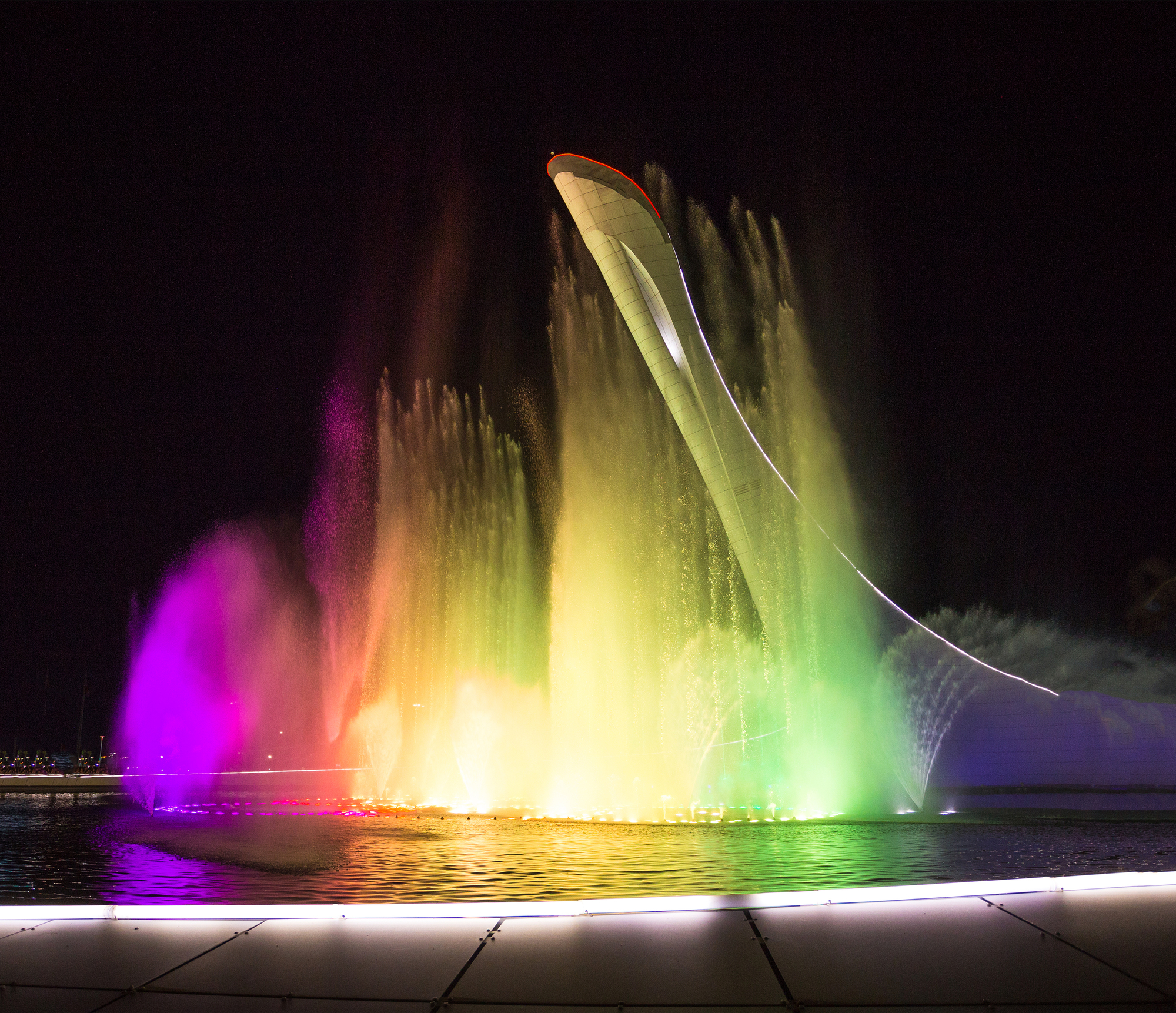
You can also visit one of the museums in the Olympic Park (the Museum of the Olympic Games Opening Ceremony; the Nicola Tesla Electrical Museum; the Leonardo da Vinci Mechanical Museum; Robotic Dinosaurs Exhibition) or the Sochi Autodrom. In the evening (on the schedule) you can enjoy the Waters of the Olympic Park show with the choreographed fountain and lights displays set to the world-famous orchestral music of Russian composers. Unforgettable impressions and amazing photos guaranteed!
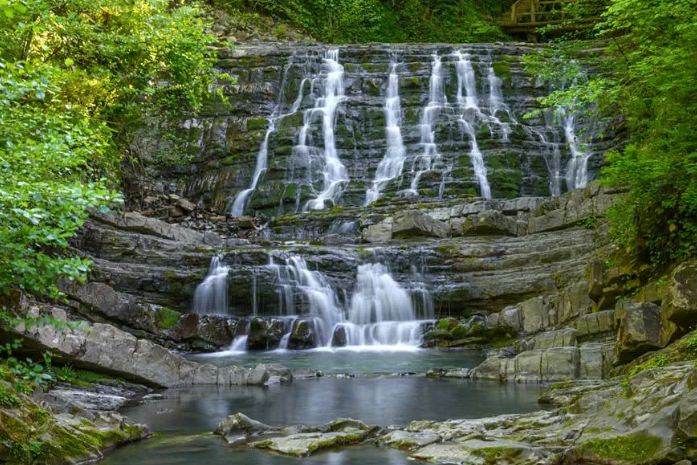
Staying at Sochi you have a chance to explore fantastic virgin nature of the Caucasus. This is not necessary to take part in multi-day active or adventure tour. For nature lovers we offer short hiking tour to the Zmeikovskiye Waterfalls located at the Khosta District of Sochi (12 km from Sochi city center). You will visit waterfalls in the valley of the famed in legends Matsesta River. During the tour you will learn the curative nature of the Matsesta springs (your way to the waterfalls will run along the river), walk in the Colchian Forest in the Sochi National Park along a rather steep tourist path, admire five picturesque waterfalls. The altitude of the highest waterfall reaches 10 m. At its foot there is a small indentation where the tourists swim with pleasure. The source of clean drinking water and a deep hole for swimming are also located over the fifth waterfall. 2-km hiking takes about 3 hours. Special training is not required.
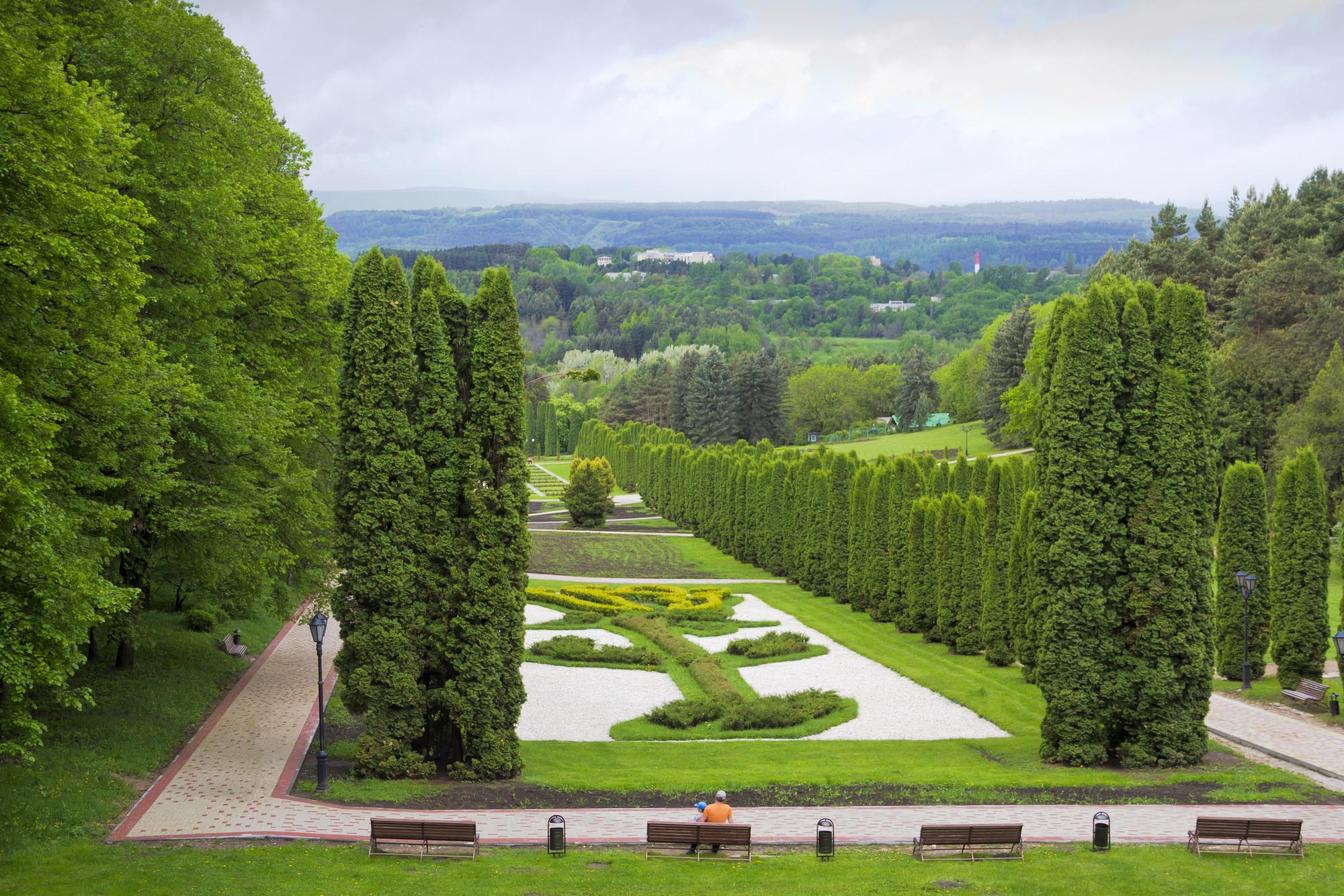
Kislovodsk Park established in 1823 has the second largest park territory in Europe (950 hectares) after the Richmond Park in London and over 250 species of trees. On the Ground of Roses and at the Valley of Roses more than 80 varieties of abundantly blooming roses are planted. Its previous development is associated with the names of Russian governors in the Caucasus generals Aleksey Yermolov and Mikhail Vorontsov. Alexander Pushkin, Leo Tolstoy, Anton Chekhov, Alexander Solzhenitsyn (native of Kislovodsk), Fyodor Chaliapin, Anna Pavlova walked here. In 1901 the first in Russia terrain cur path was marked at the Kislovodsk Park accordingly to the fashionable method of German physician Max Oertel. Now the length of five wellness paths is almost 100 km. You will be offered three types of Kislovodsk Narzan mineral water in the Main Narzan Gallery built by English architect Samuel Upton in the Gothic style (1848-1853). The Main Mineral Water Baths built in the Orient style (1901-1903) is also very interest architectural monument.
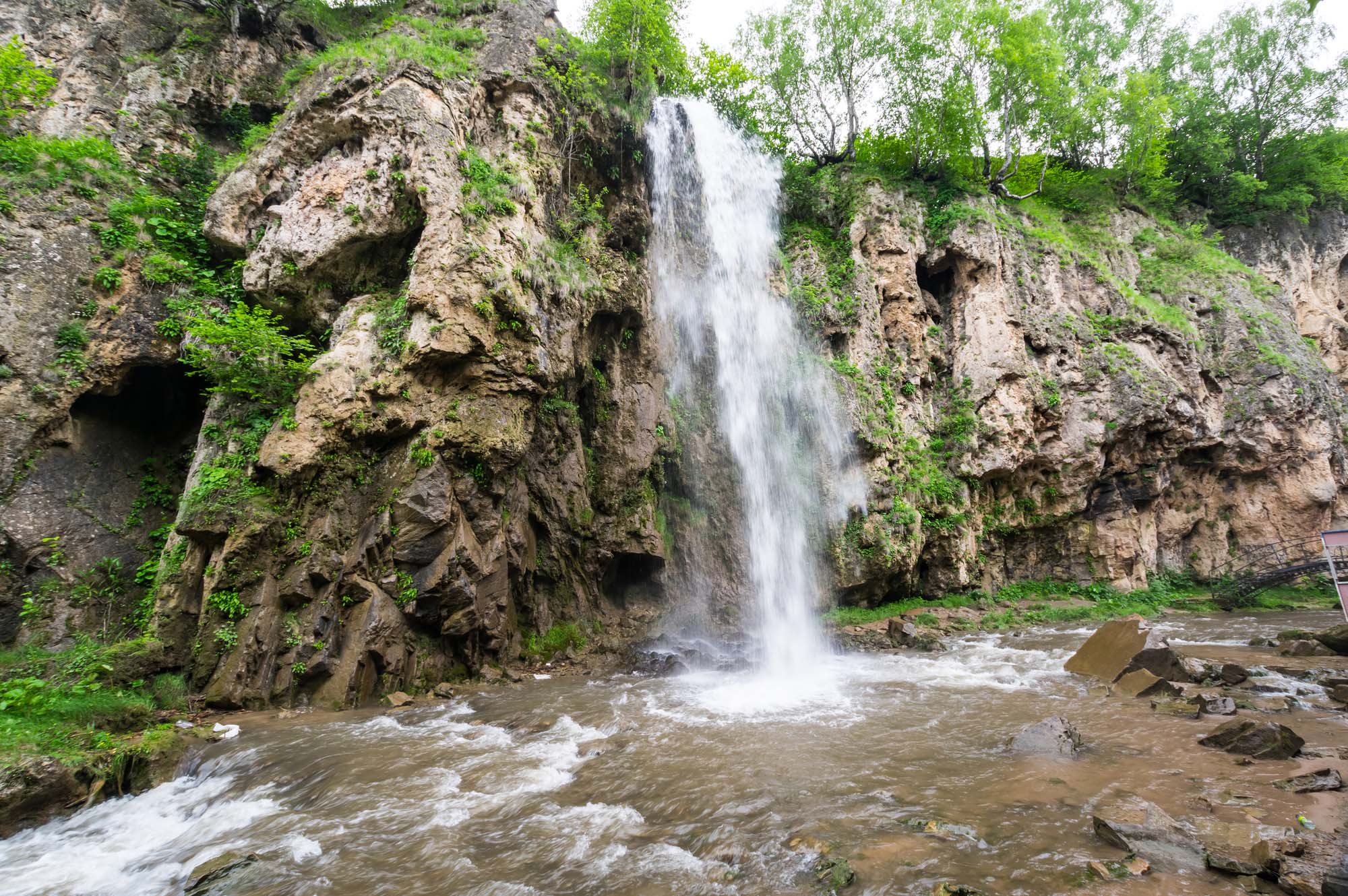
This is not necessary to go away from the benefits of civilization to enjoy beautiful nature of the Caucasus. We recommend you to visit the Alikanovsk Gorge located not far from Kislovodsk where you will admire mountain landscape and take a look at “real Caucasus” in small scale. During the way you can stop at natural monument – The Ring Mountain. Nevertheless the main place of interest during your trip is the Medovye (the Honey) Waterfalls (20 km from Kislovodsk) where from the viewpoint platform you can enjoy the mountain landscape with 5 waterfalls of different height, alpine meadows and rocks covered with net of narrow gorges. Another natural monument is the Rim (Rome) Mountain. Ancient Alan settlement (VI-XIV century) stood at its foot. After the trip to the Medovye Waterfalls you will have time to rest and to enjoy the view, to taste national cuisine. Local chefs will treat you to the best hychin and kebab. After lunch you can visit the Karachai Yard Museum and small village house with a cattle. In the end of this program you will see a performance of dancers and musicians and even will have a chance to learn some moves. On your way back you will visit a Tea House and taste herbal tea and homemade jam and stop at the Intrigue and Love Castle to hear about the Caucasian legend that gave the name to this place.
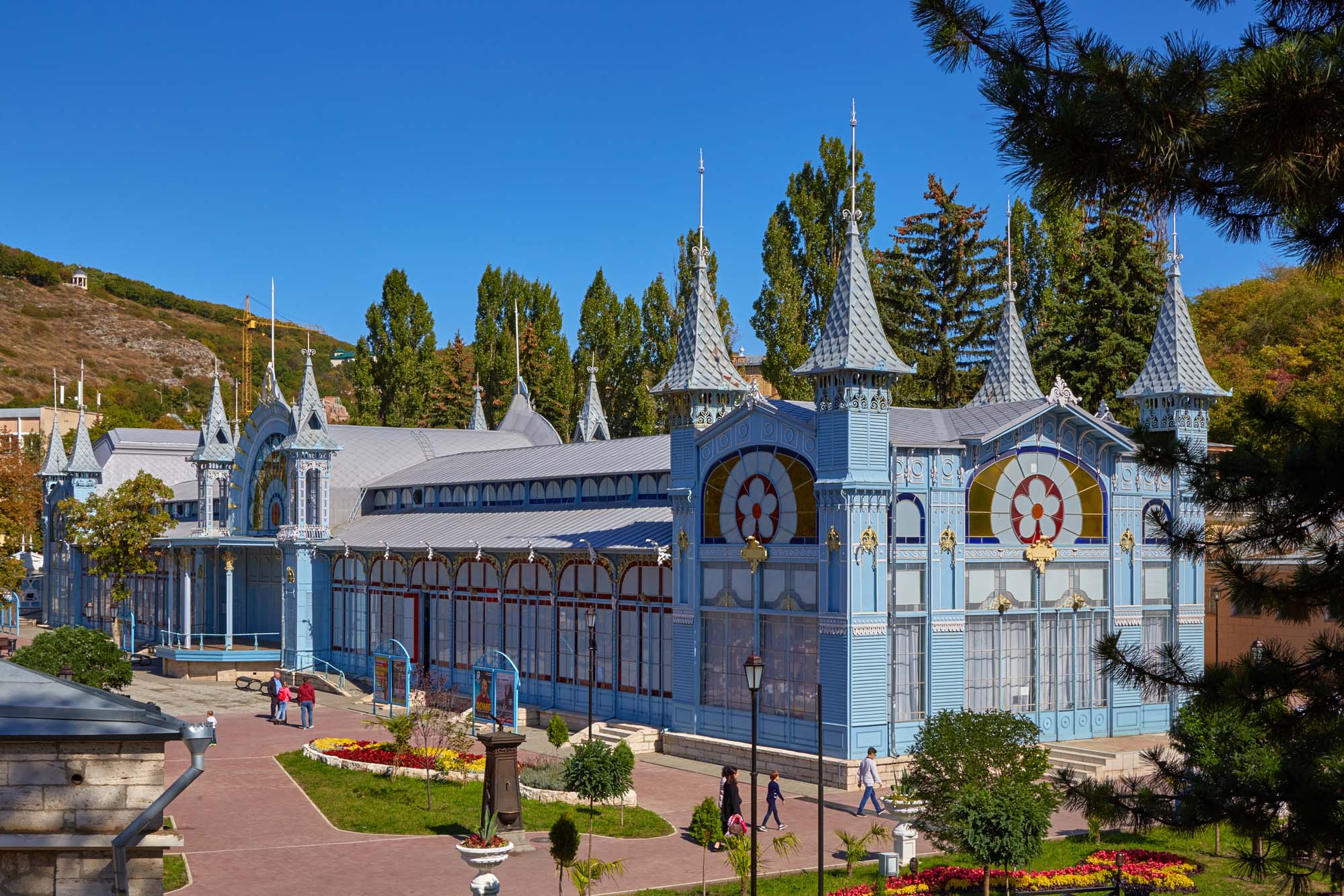
Pyatigorsk was founded in 1780. Designed and built by Swiss architects brothers Giuseppe and Giovanni Bernardazzi almost from the scratch Pyatigorsk became the first European-like city in the Caucasus region. It is the oldest city at Caucasian Mineral Waters area and the oldest spa resort in Russia. Mineral springs discovered by Russian soldiers at the city environs soon after foundation of Pyatigorsk were described in detail in 1793 by German zoologist and botanist Peter Simon Pallas who was sent on an official journey to Caucasus by Russian Academy of Sciences. Development of Pyatigorsk resort in early and mid-XIX c. is associated with the names of Russian governors in the Caucasus generals Aleksey Yermolov and Mikhail Vorontsov. Magnificent the Tsvetnik Park was laid in Pyatigorsk in 1828. At the park you will enjoy the view from Aeolus Harp pavilion and see the famous underground Lake Proval (Fall) discovered in 1793 by Peter Simon Pallas. In 1928 the Lake Proval received popularity in USSR thanks to the «picaresque» novel of Ilya Ilf and Yevgeny Petrov The Twelve Chairs. If the weather is fine we also offer you to take a ride on the cable car on the top of the Mashuk Mountain to enjoy the unforgettable view on the city and the Caucasus Range. Pyatigorsk is a city that witnessed many historical events and personalities but the most important for the city is Mikhail Lermontov, the famous Russian poet who lived and died tragically here. Pyatigorsk is a locale of his well-known novel A Hero of Our Time (1839-1841) where so called superfluous man, one of the main characters of Russian literature, is presented. There are places in Pyatigorsk that are associated with Mikhail Lermontov: his house where poet spent two last months of his life (1841) left untouched since XIX c., place of his duel not far from the Mashuk Mountain, his original tomb at the Necropolis. In the 60-th anniversary of the death of Mikhail Lermontov (1901) the Lermontov Gallery Kurhaus was built in Pyatigorsk. Fyodor Chaliapin, Maria Yermolova, Leonid Sobinov, Vladimir Mayakovsky, Mily Balakirev performed at the concert hall of the Gallery.
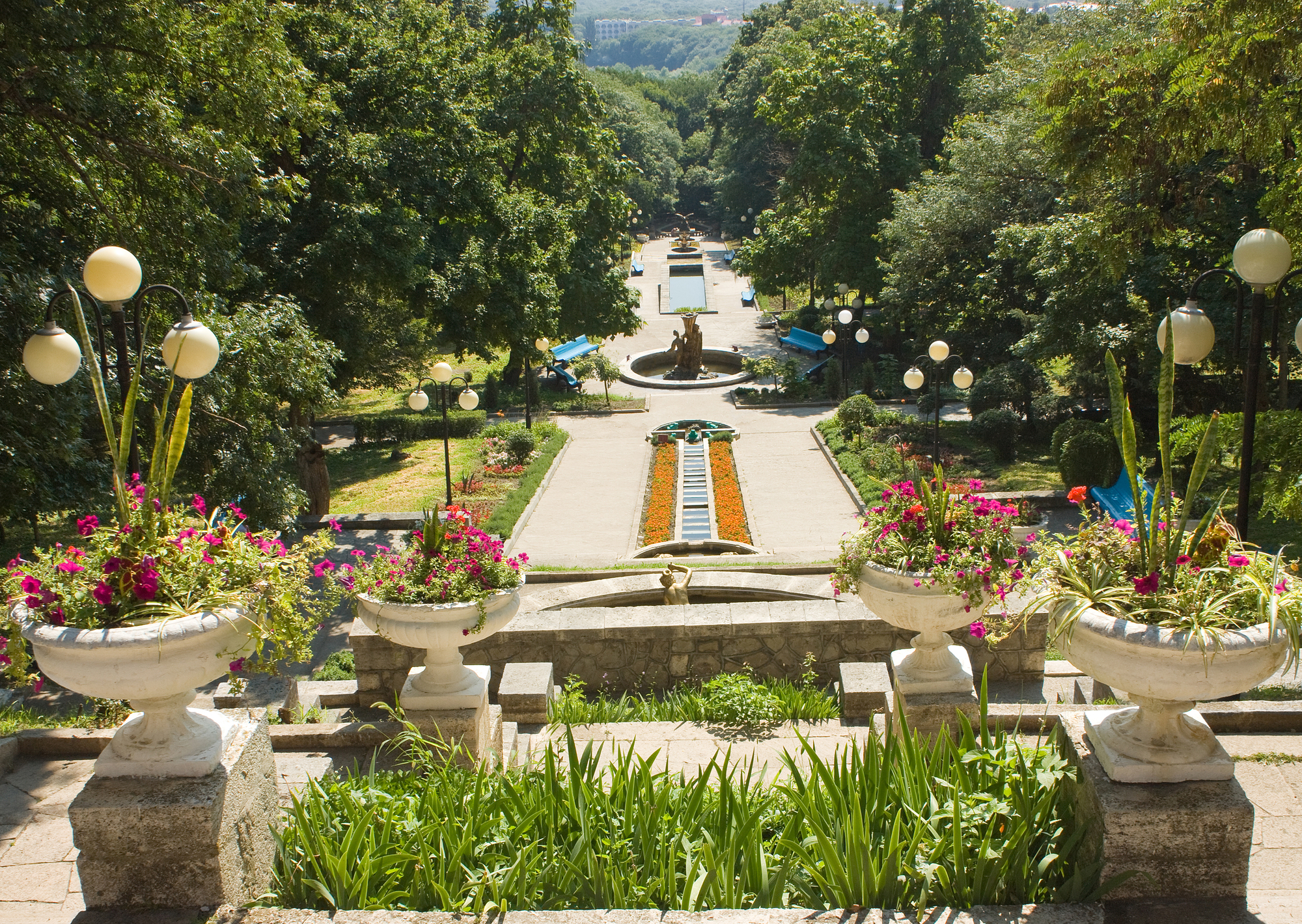
Two mineral springs found in 1810 by physician, social activist and humanist (the “holy doctor of Moscow”) Friedrich Joseph (Fyodor Petrovich) Haass at the slope of the Zheleznaya (the Iron) Mountain got the resort of Zheleznovodsk off the ground. At this small town you can see buildings of the XIX c., magnificent architectural monuments in the Modern style and grandiose constructions of Soviet period. The most interesting architectural monuments are the Palace (Dacha) of Bukhara Emir (1909) whose regular visits to Zheleznovodsk were great events in a deliberate, sleepy life of small resort town, the Pushkin Gallery Kurhaus (1901) made in St. Petersburg and Warsaw and transported by rail way to Zheleznovodsk where the construction was assembled at the same time with the Lermontov Gallery in Pyatigorsk, the Ostrovskiy Baths built in style of the Moorish architecture (1893), the Grand Cascading Staircase (1935), Zheleznovodsk Railway Station (1897). We recommend you also to visit picturesque the Spa Park founded in 1825 on the slope of the Zheleznaya Mountain. In Zheleznovodsk you have a chance to taste the Slavyanovskaya mineral water from unique hot spring.

The Elbrus Mountain located at the Greater Caucasus Range is the highest mountain peak in Europe (5642 m) included into the Seven Summits list of the highest mountains of the seven continents (don’t confuse with the World List of highest mountains in which 100 leading positions are occupied by peaks located in Asia). The most popular mountaineering itinerary to the Elbrus is ascent by the south slope. Any special training and experience are not required. Ascent by the northern slope (journey of the first Russian expedition to the Elbrus peak arranged in 1829 by commander of the North Caucasus Line general Georgi Emmanuel) with lesser concentration of infrastructure is considerably more difficult. The main problem is 2000m climbing from the last permanent camp to the peak. Special training and good mountaineering experience are strongly necessary.